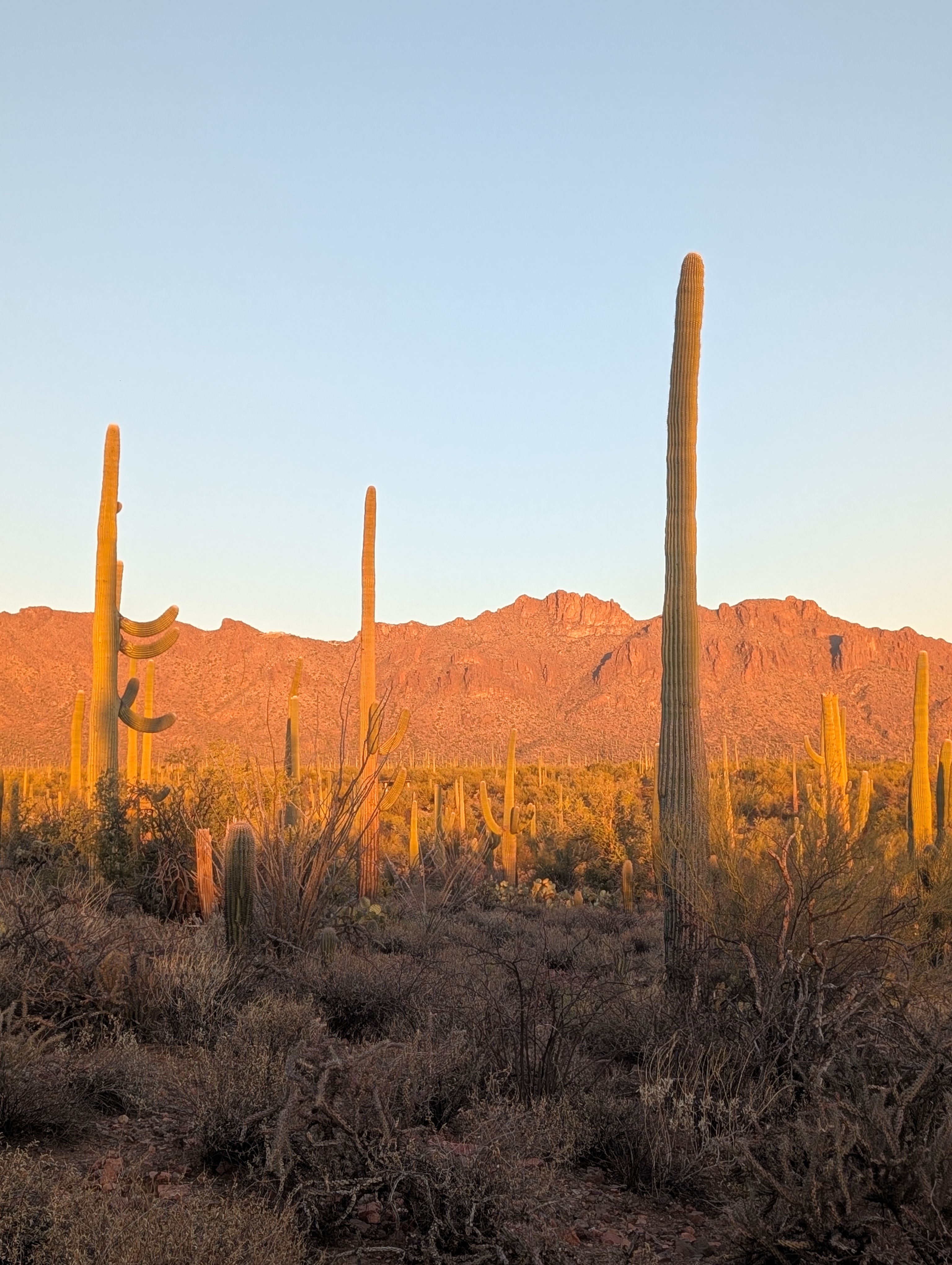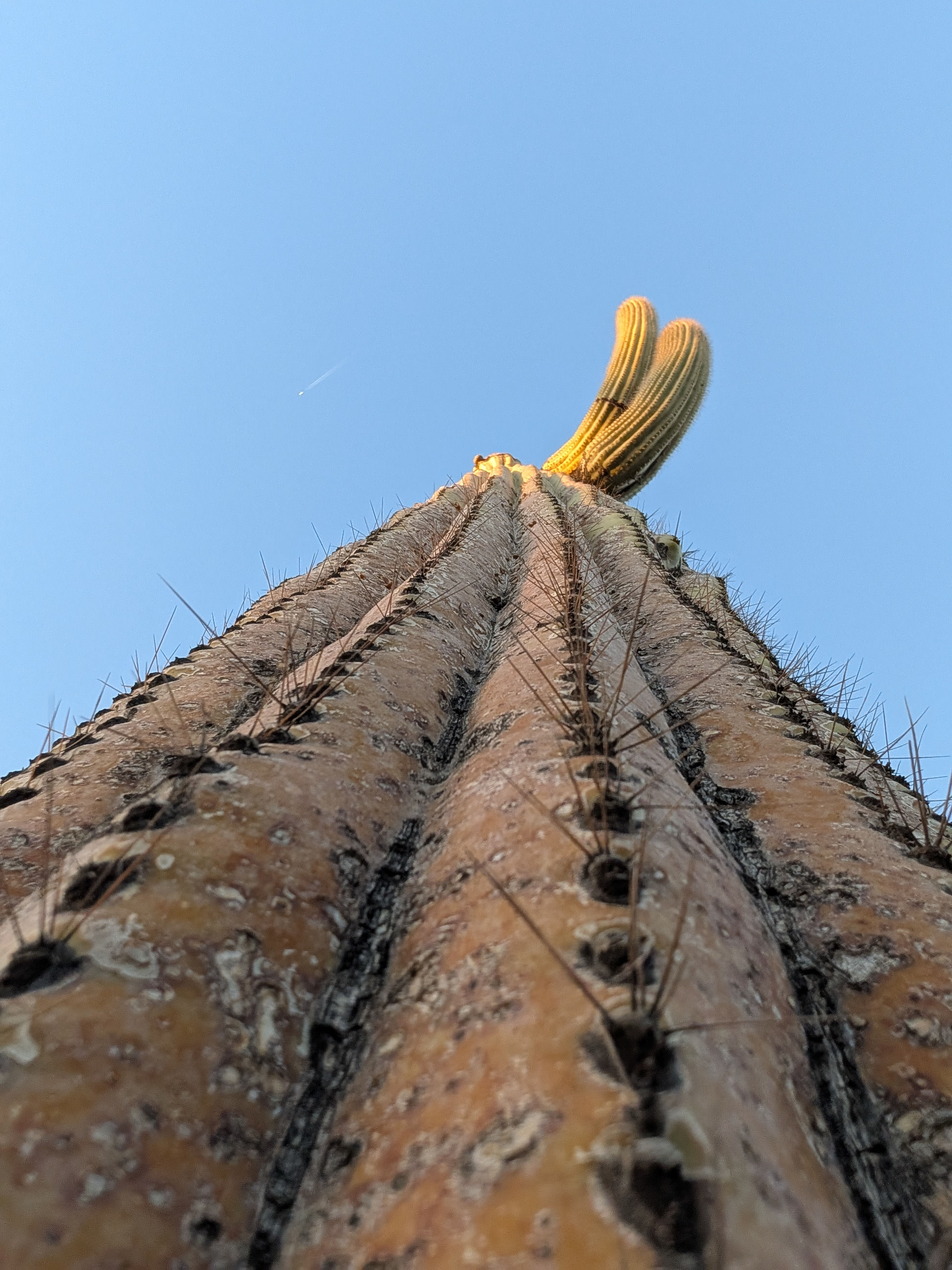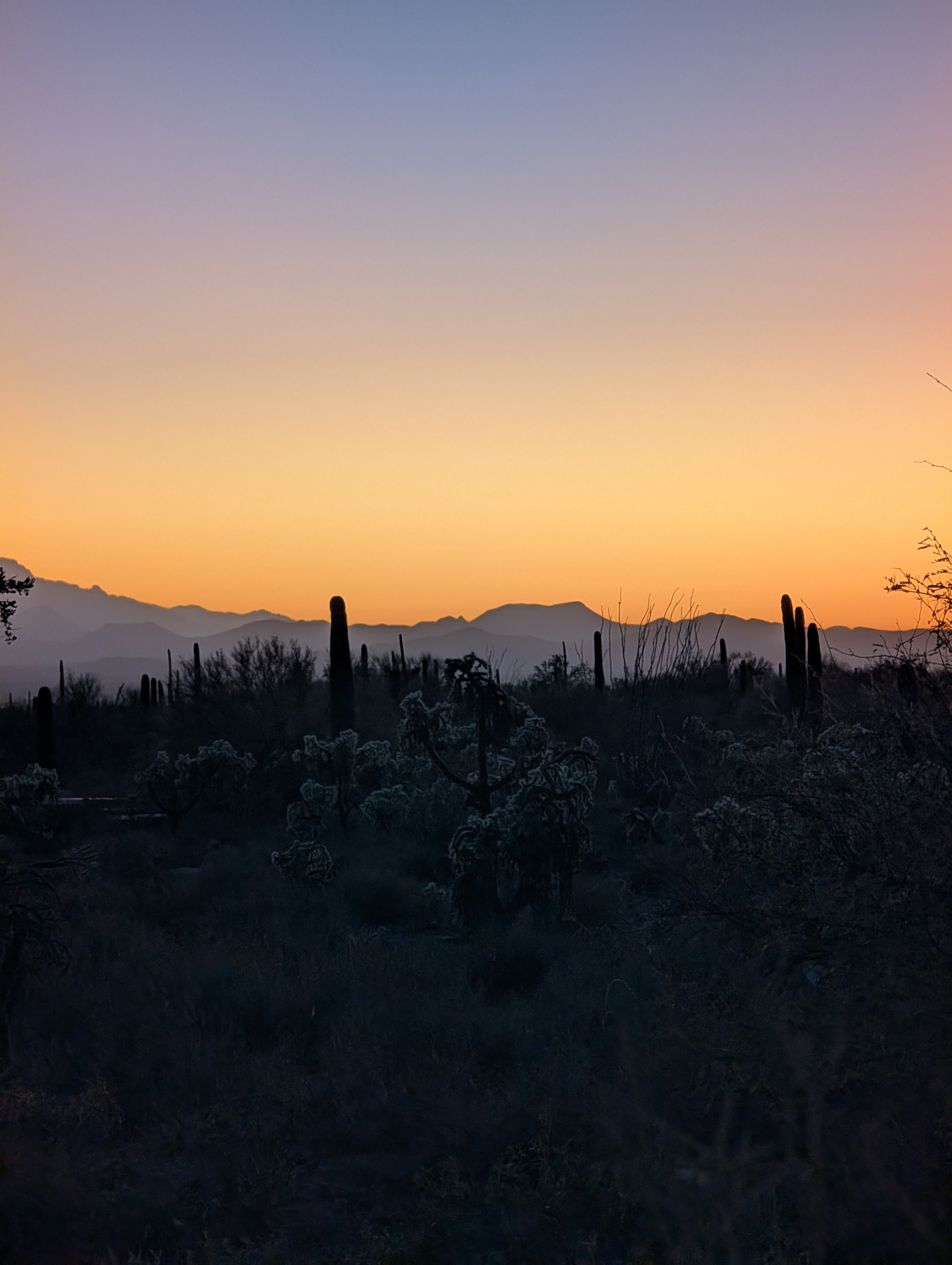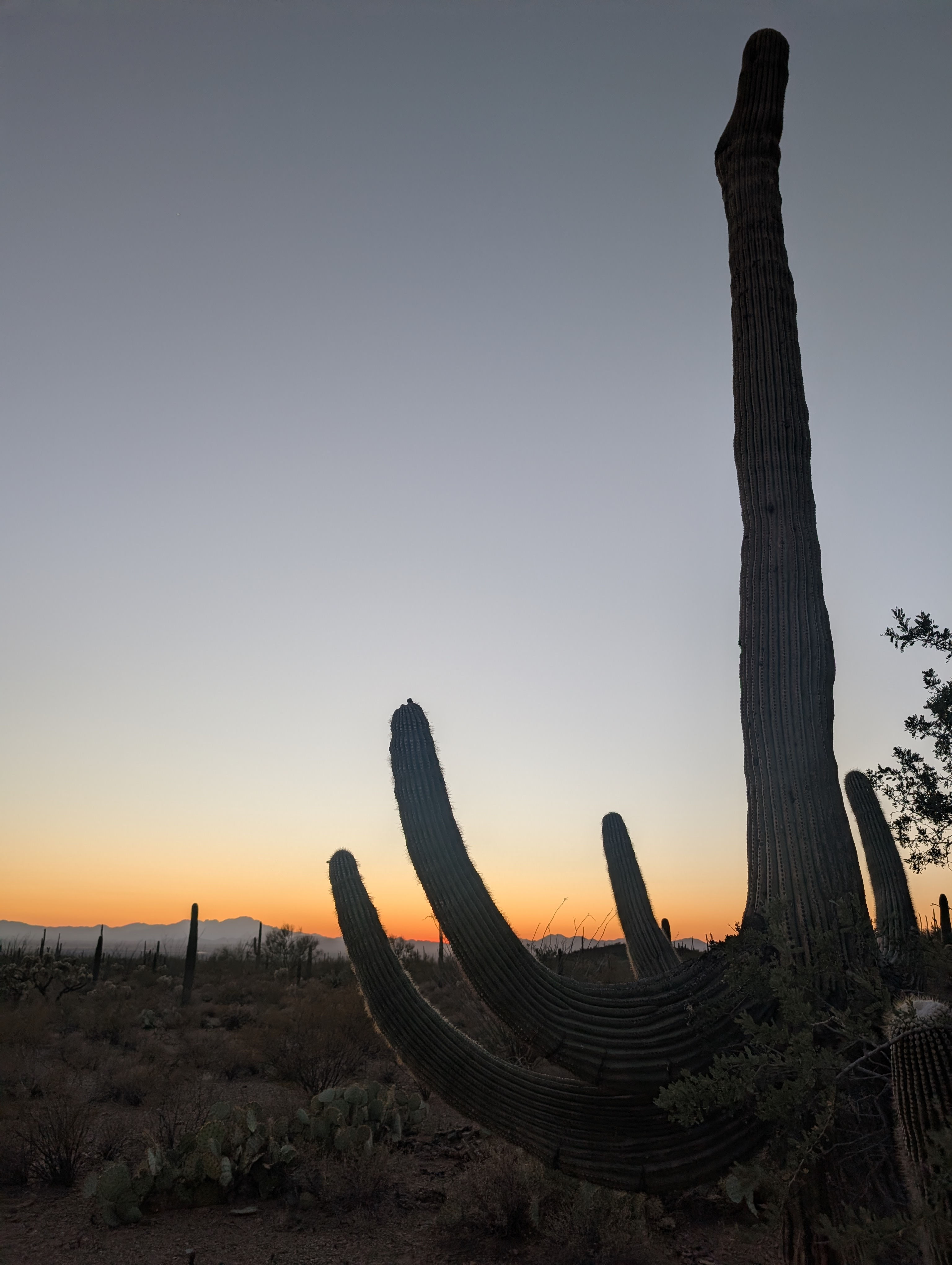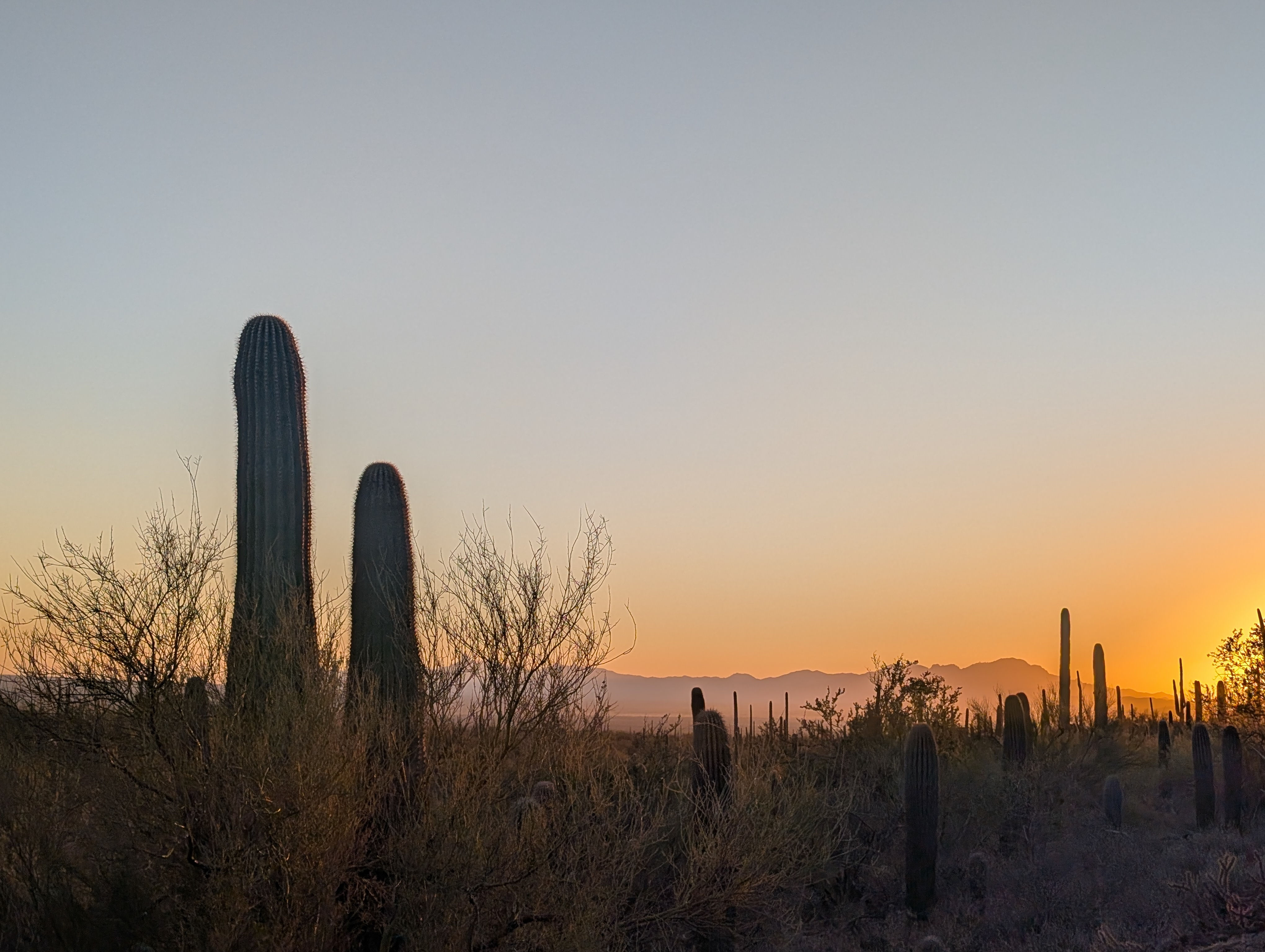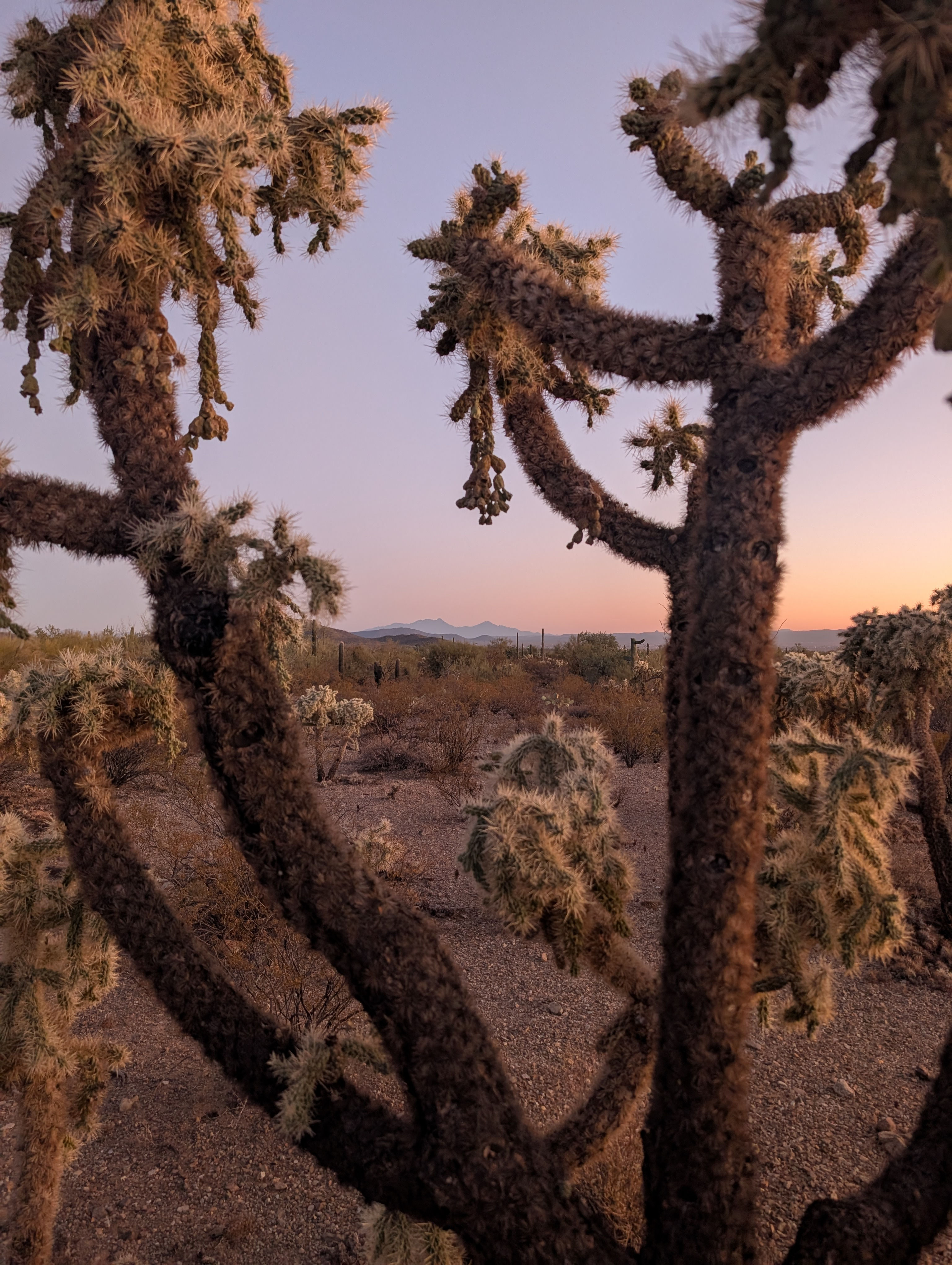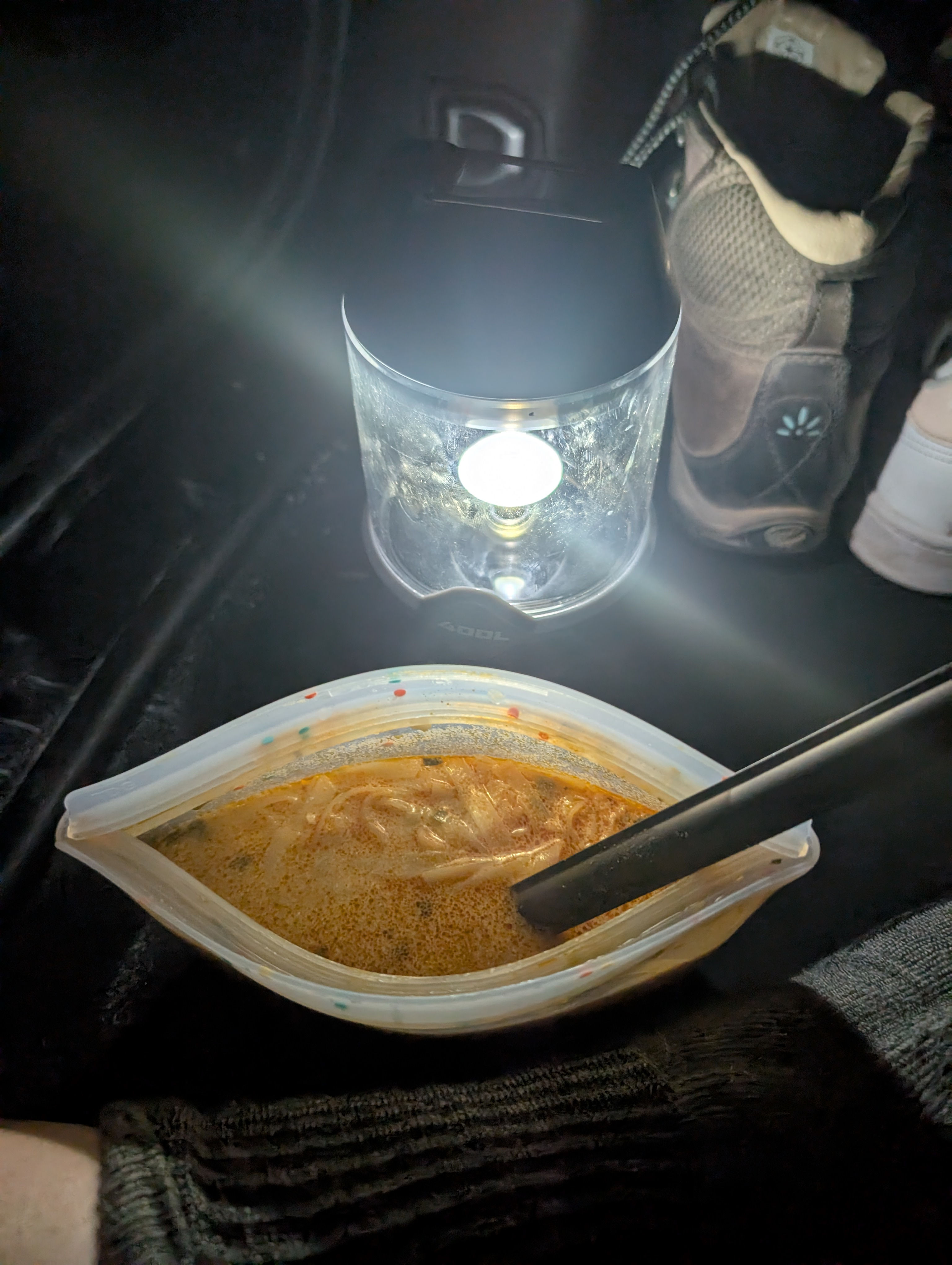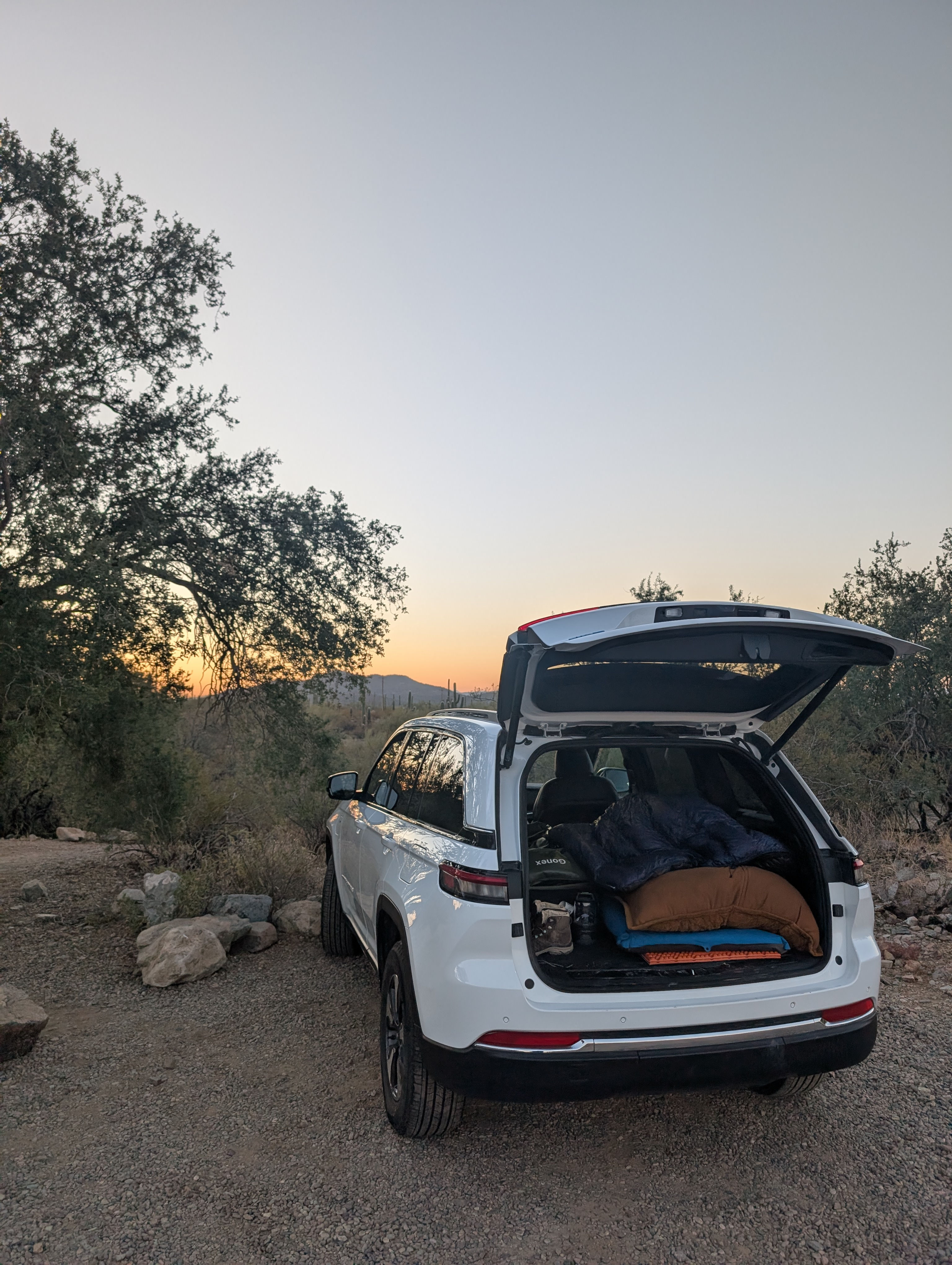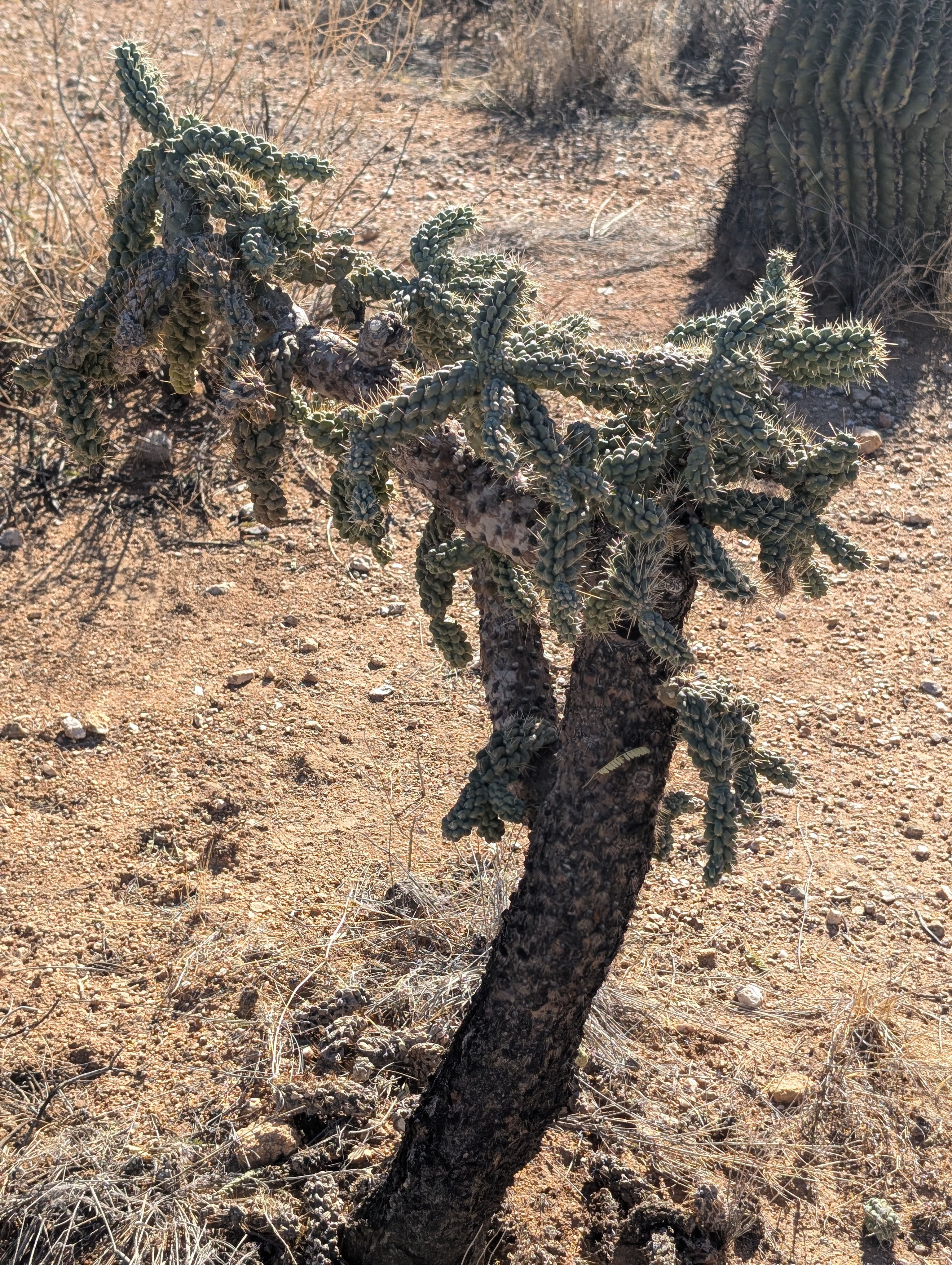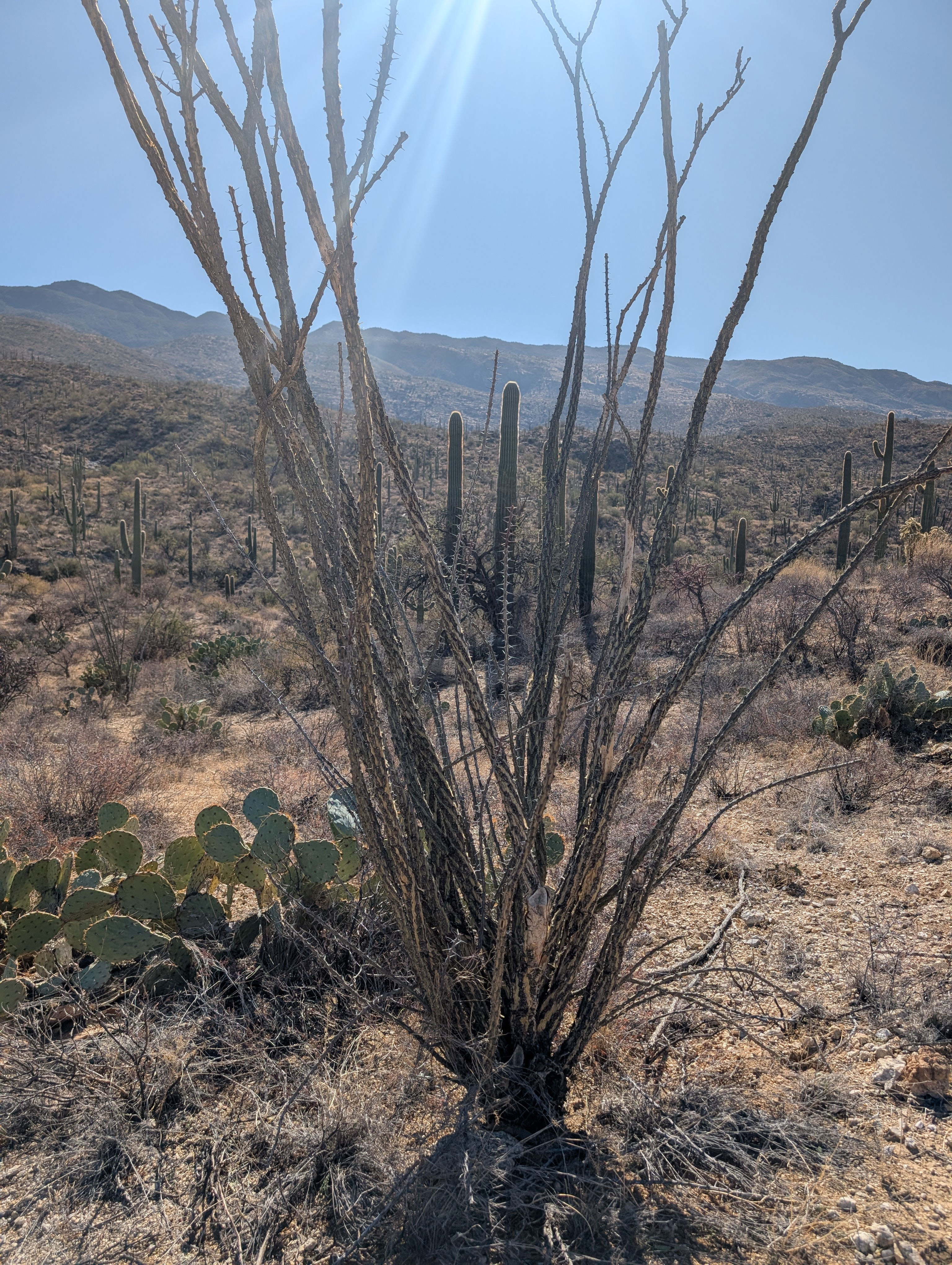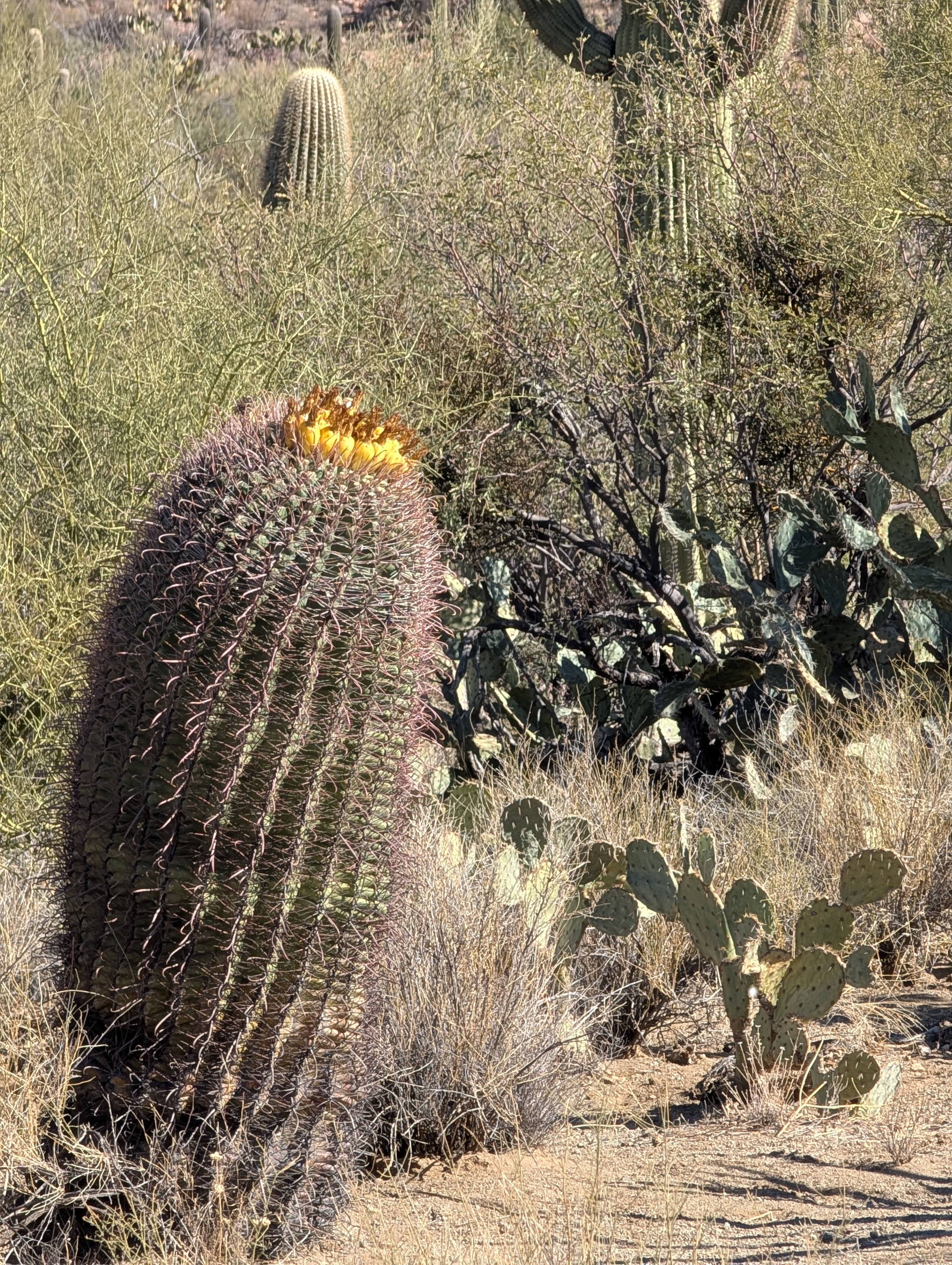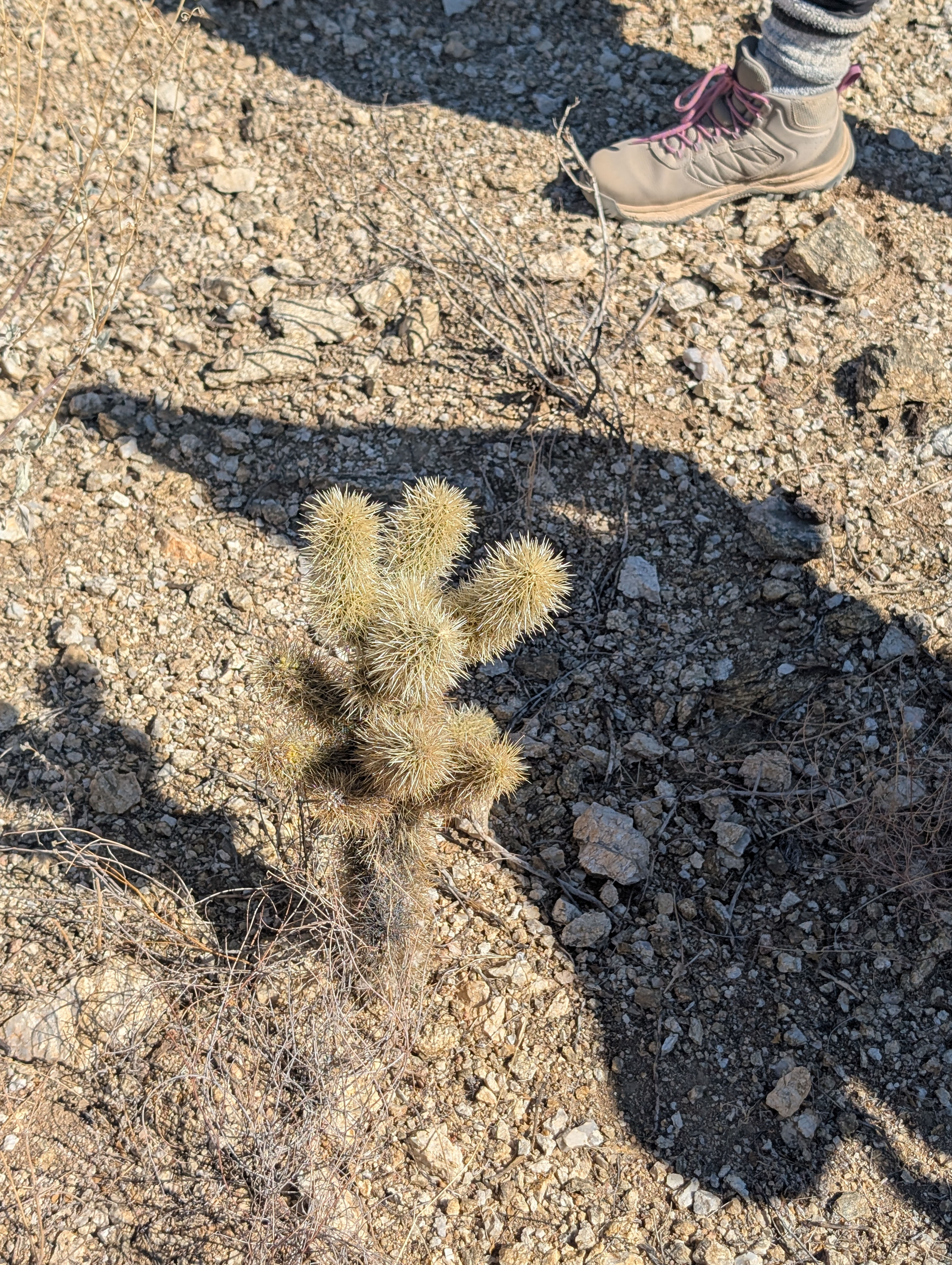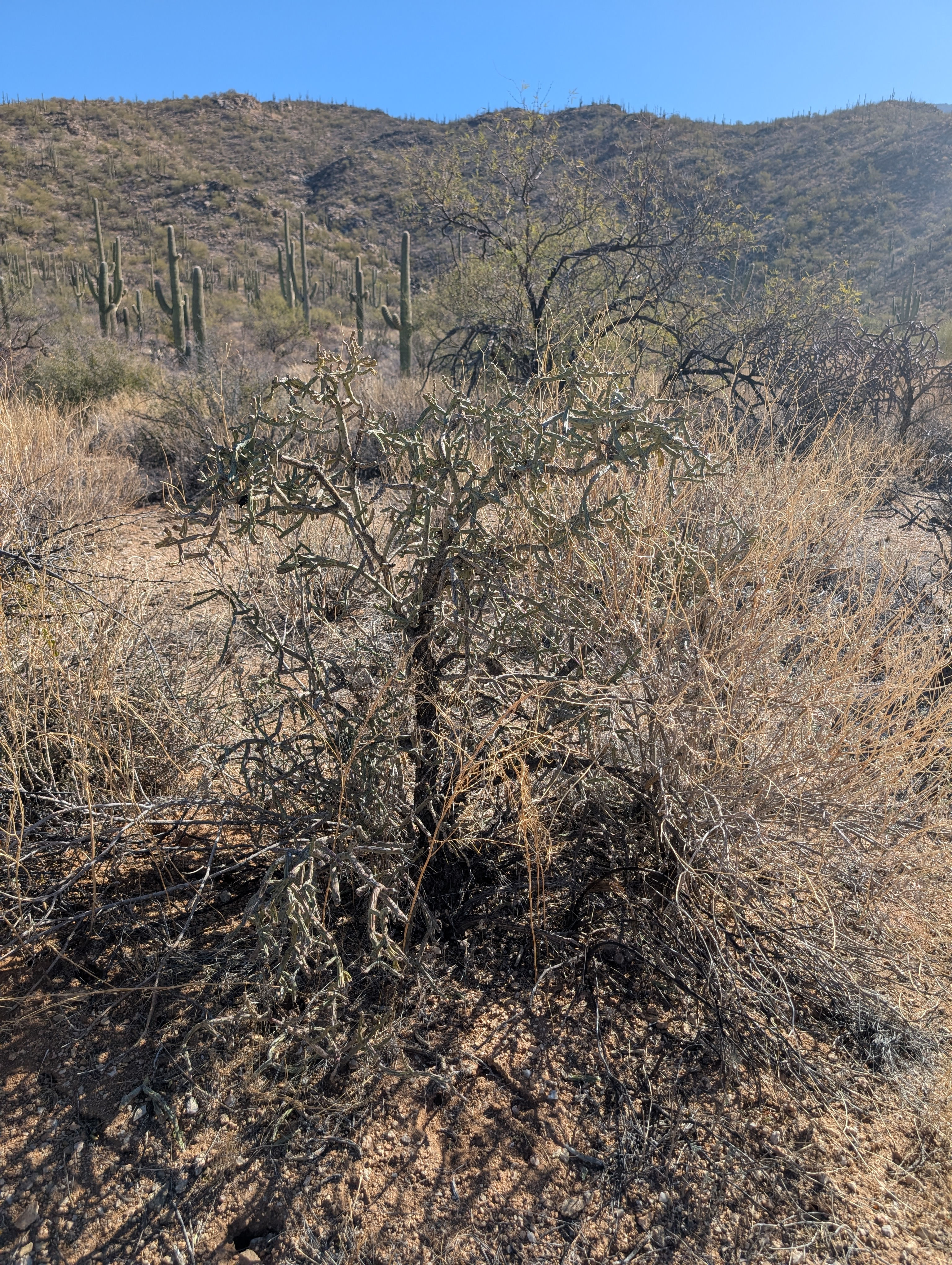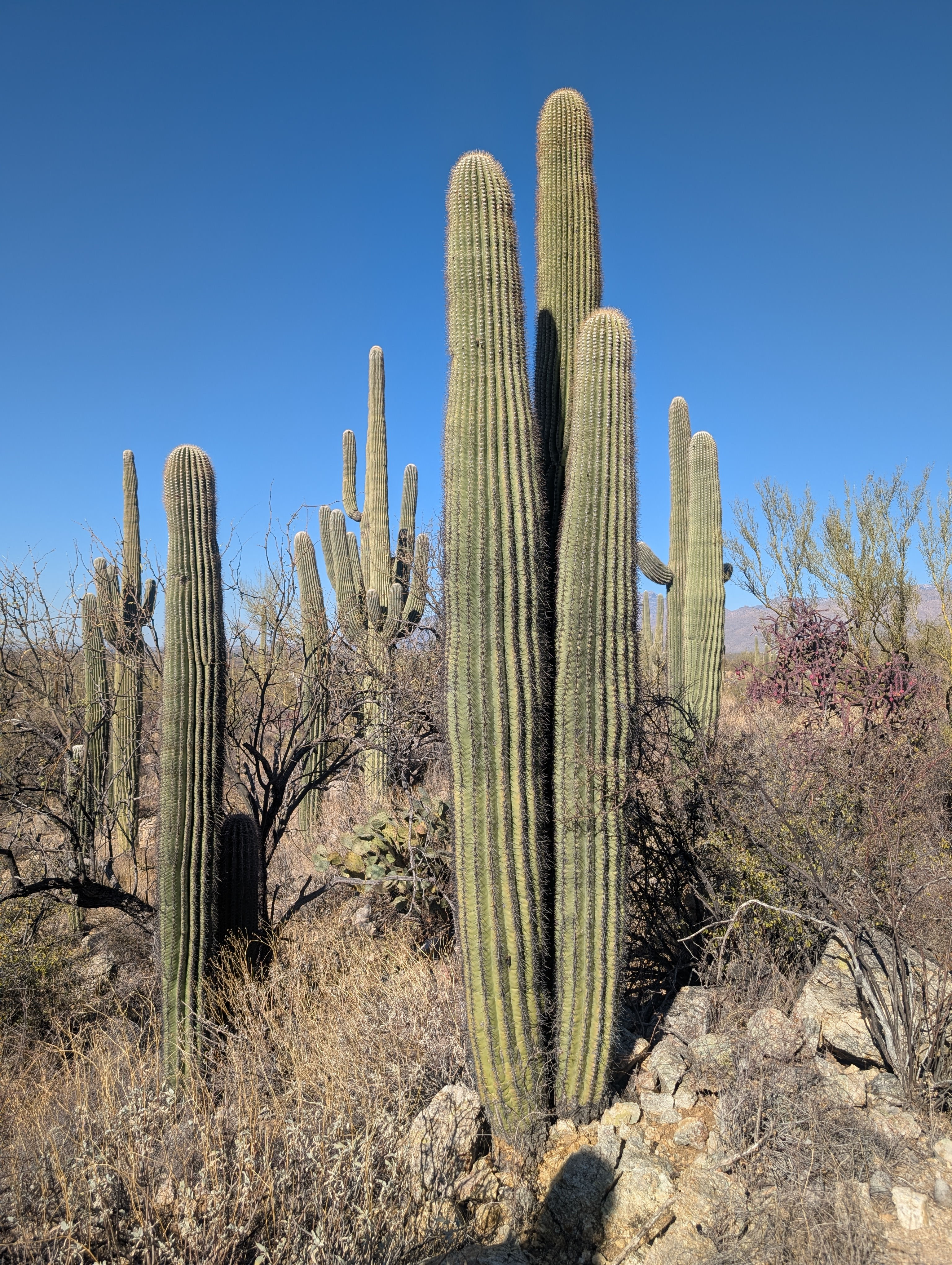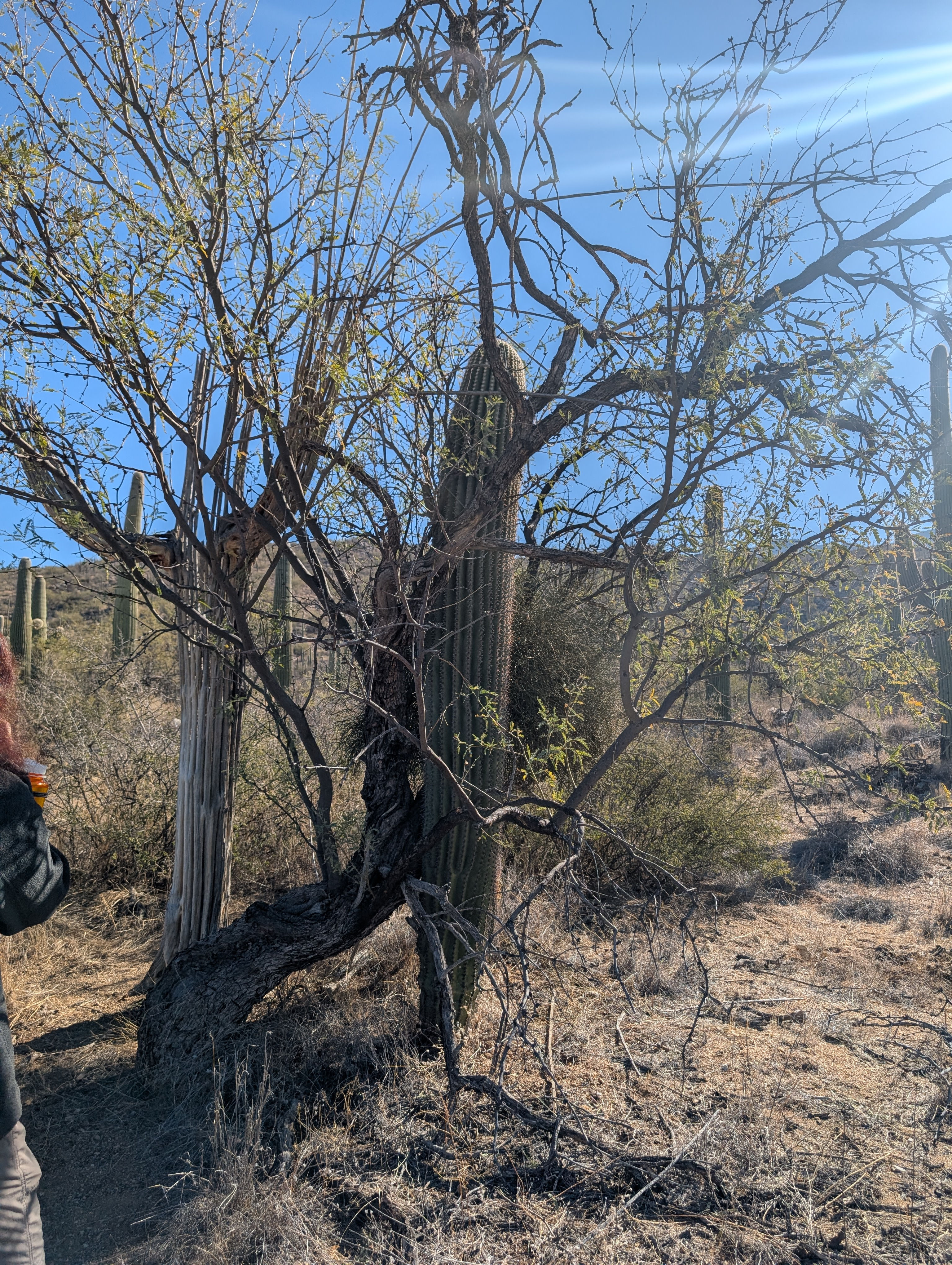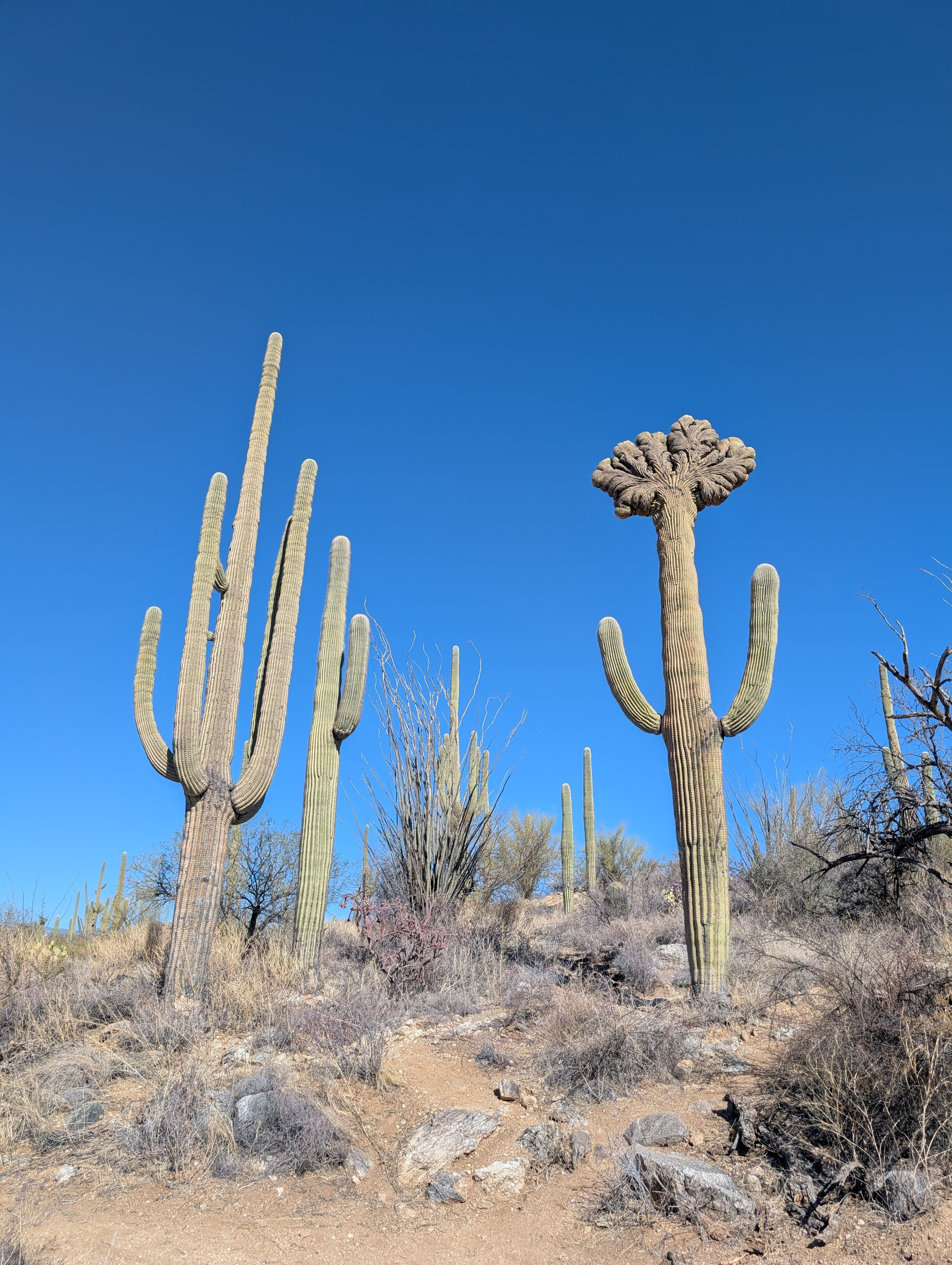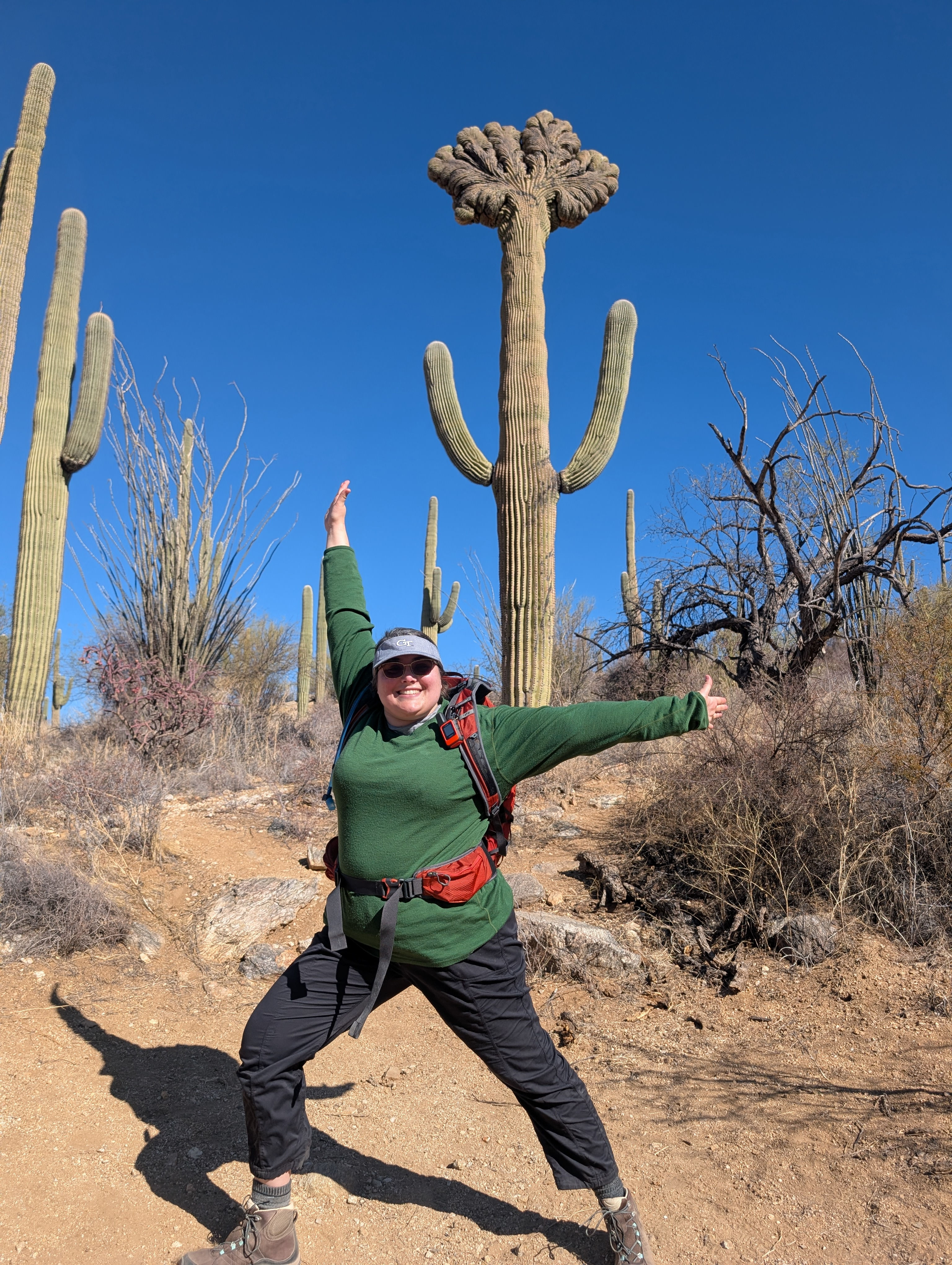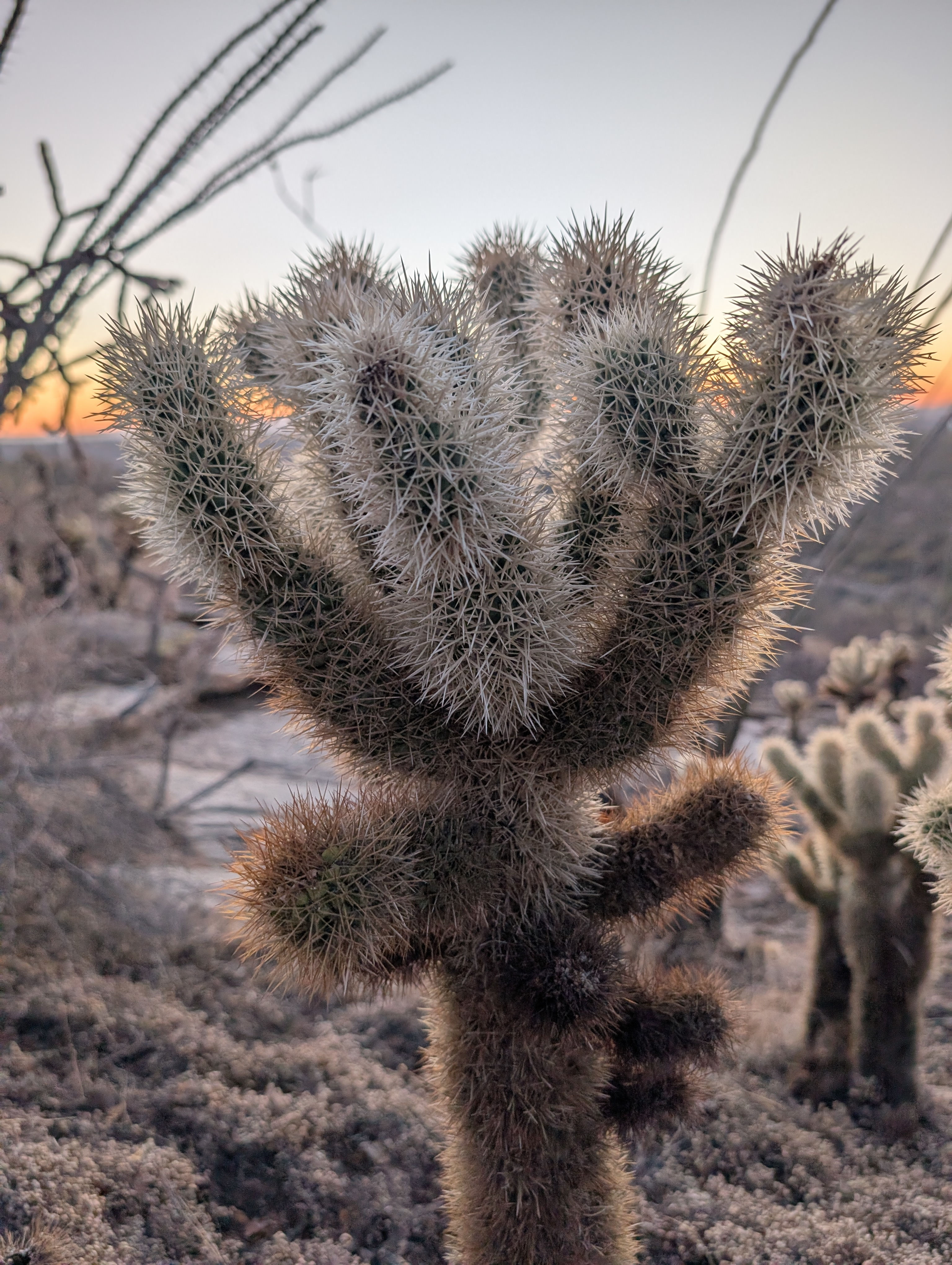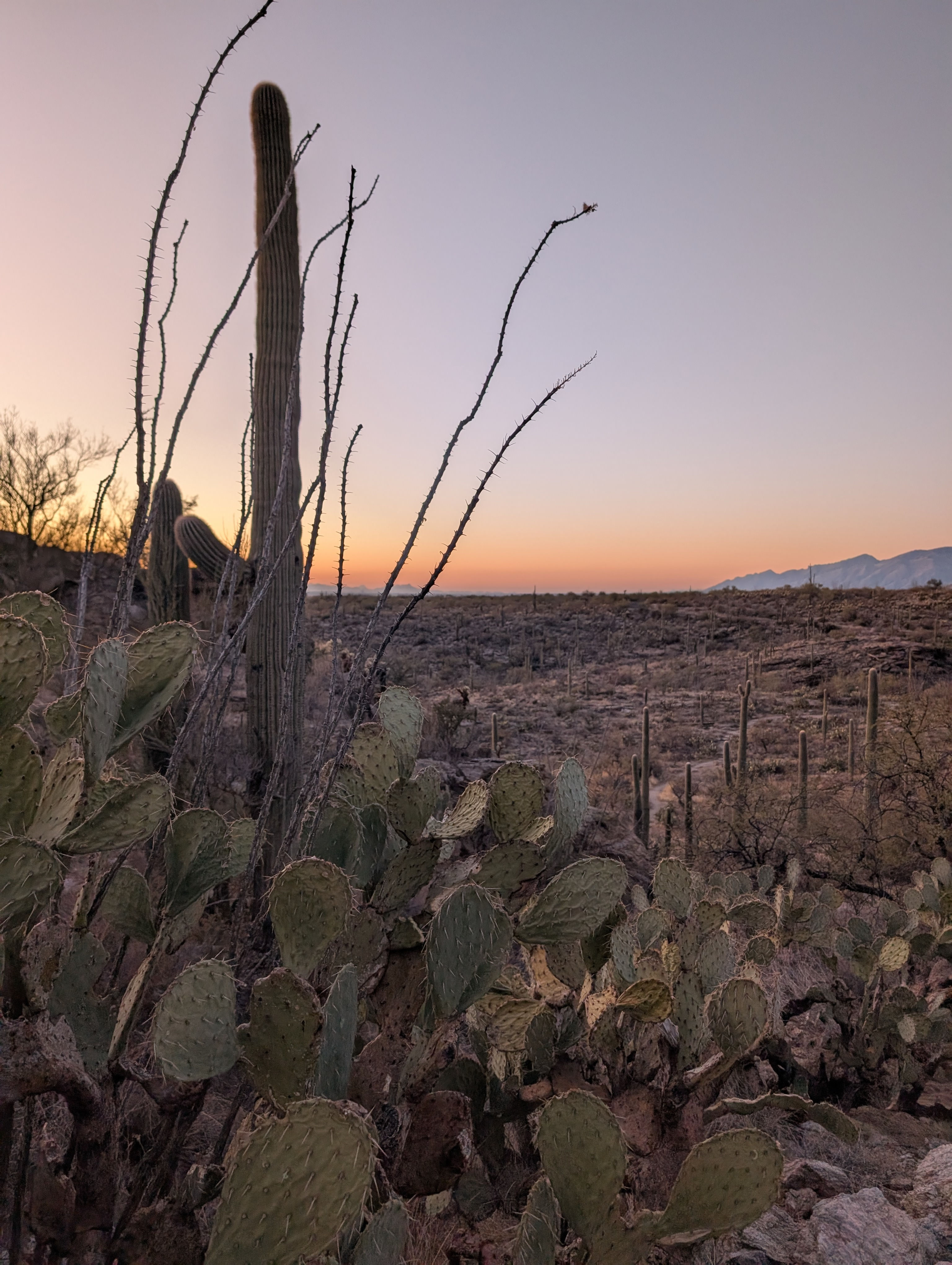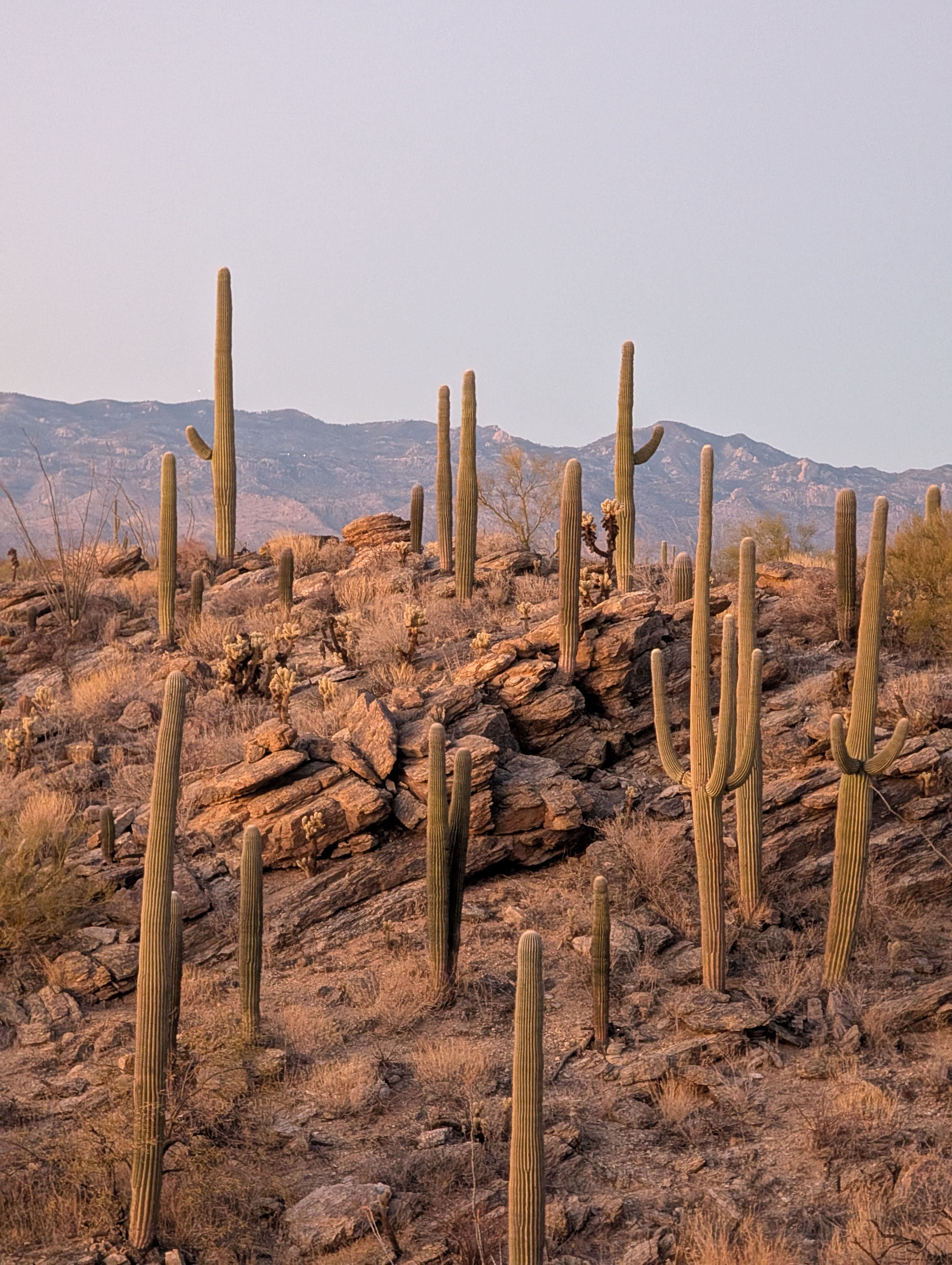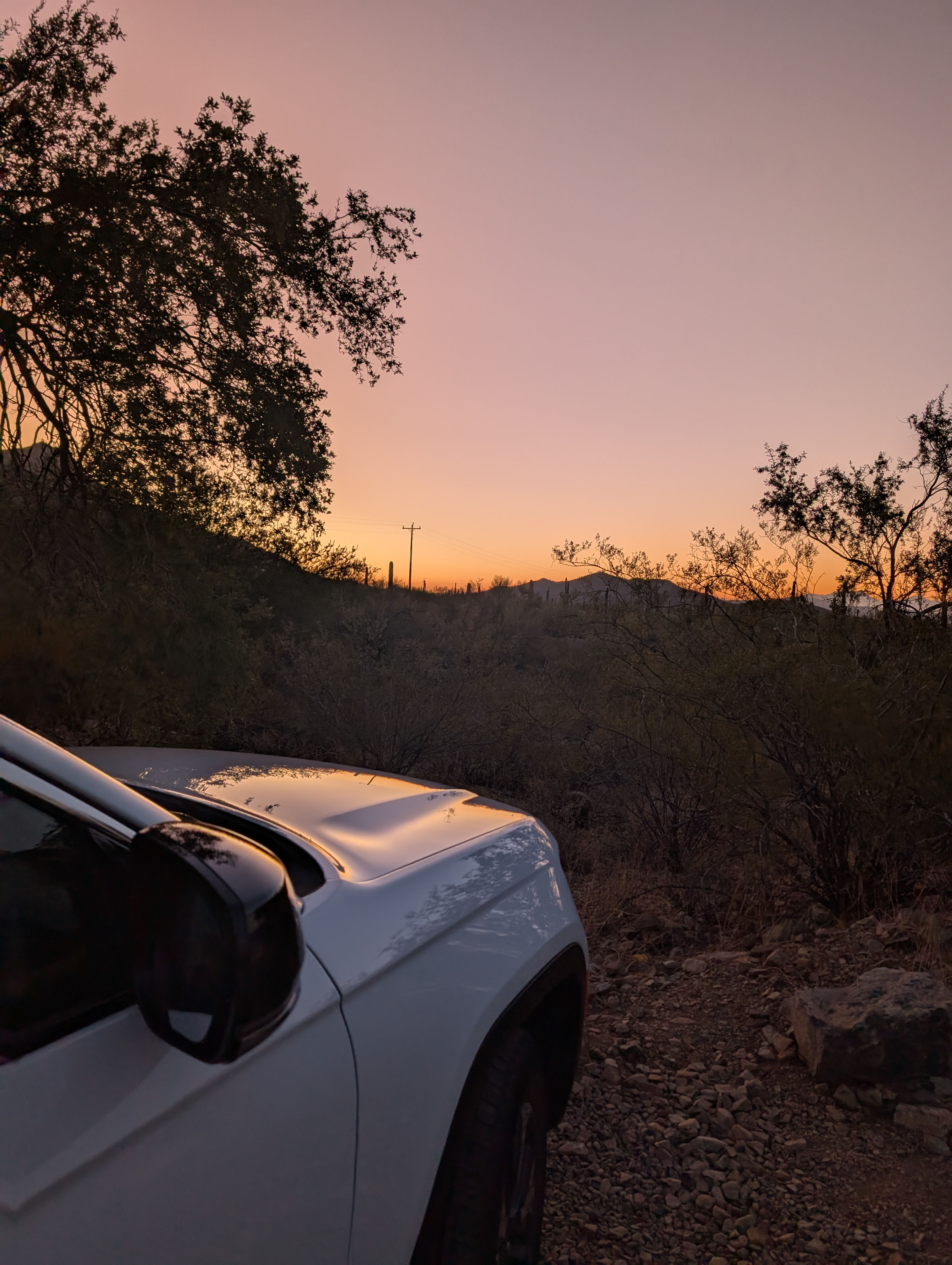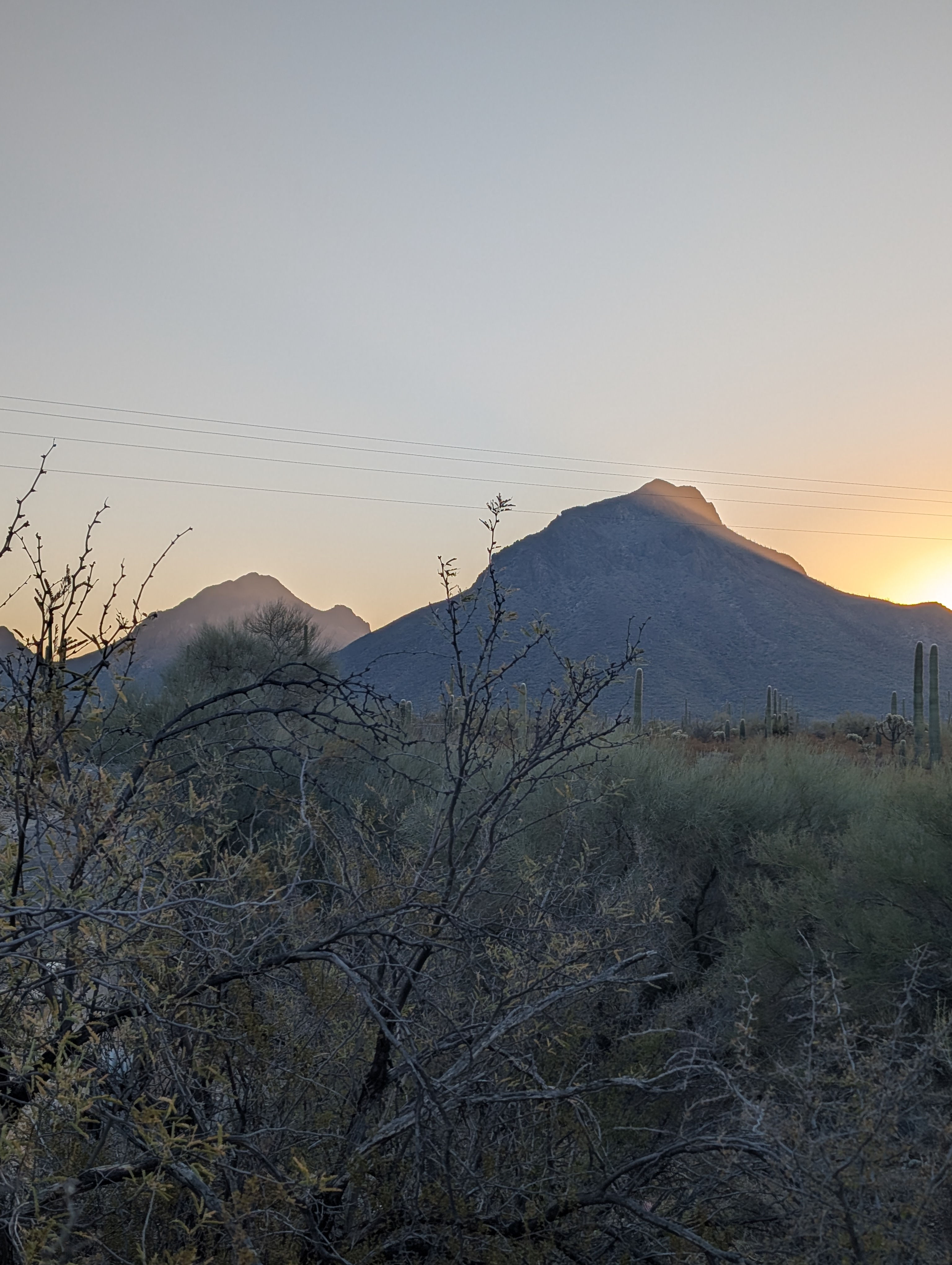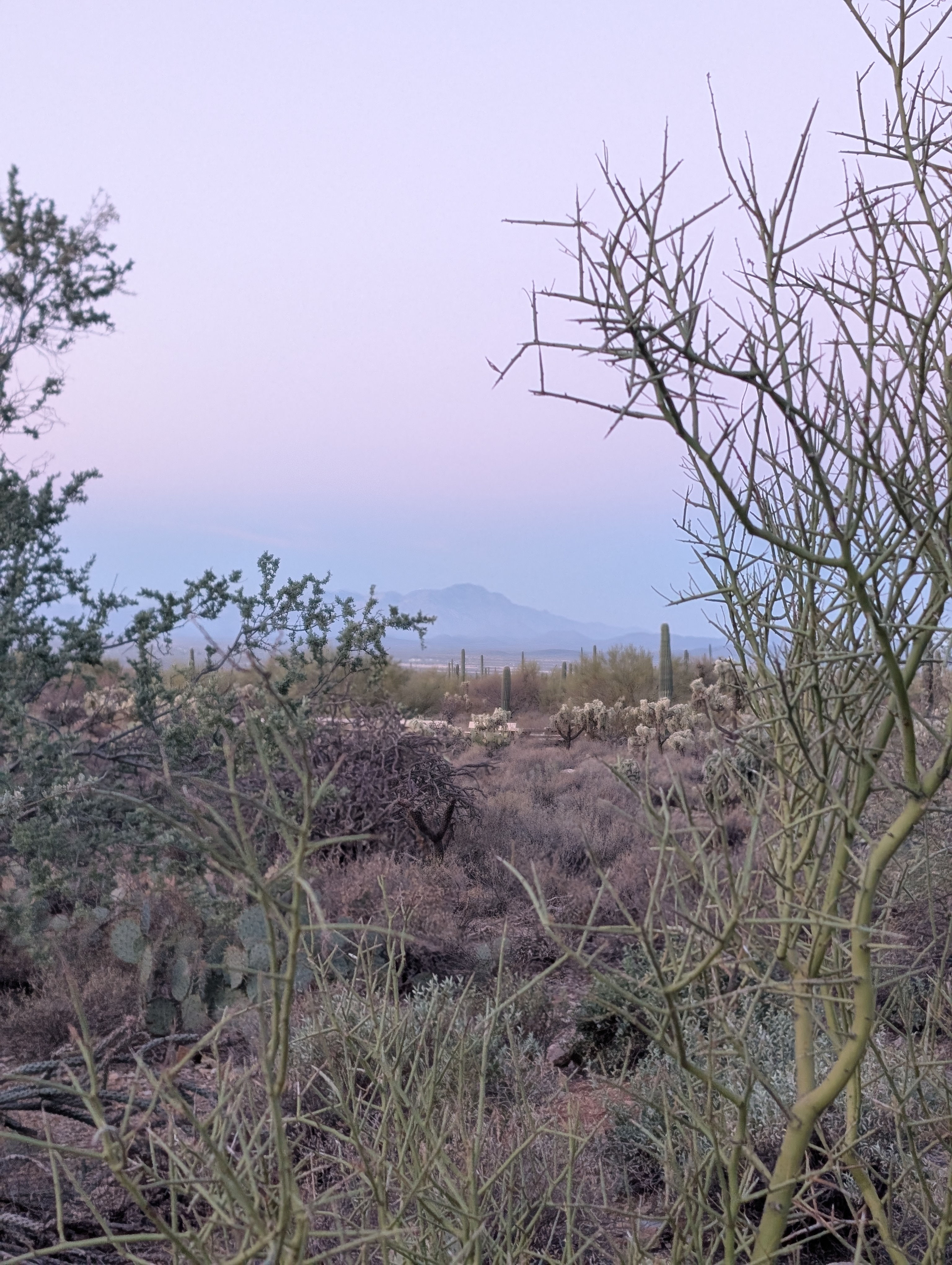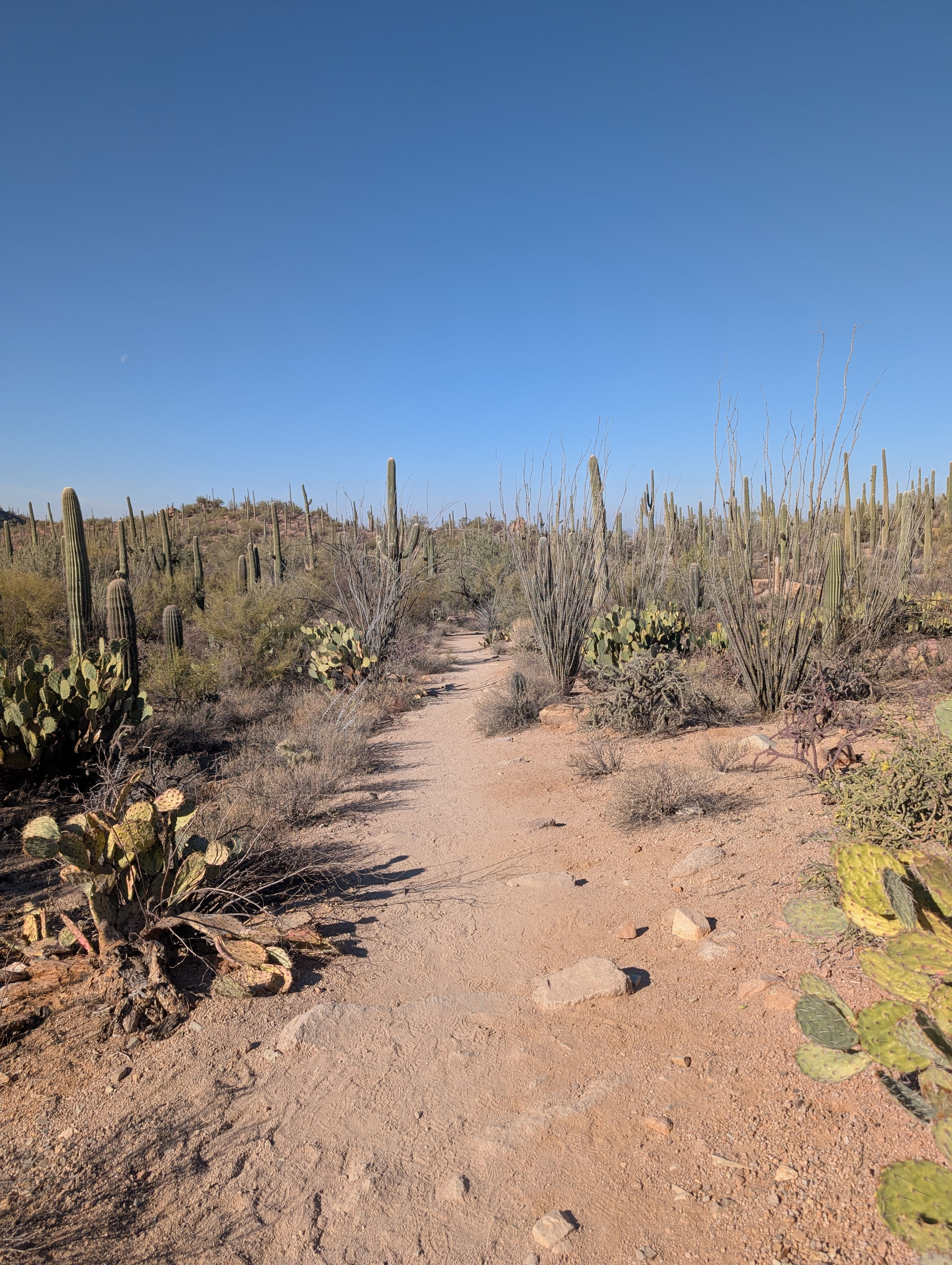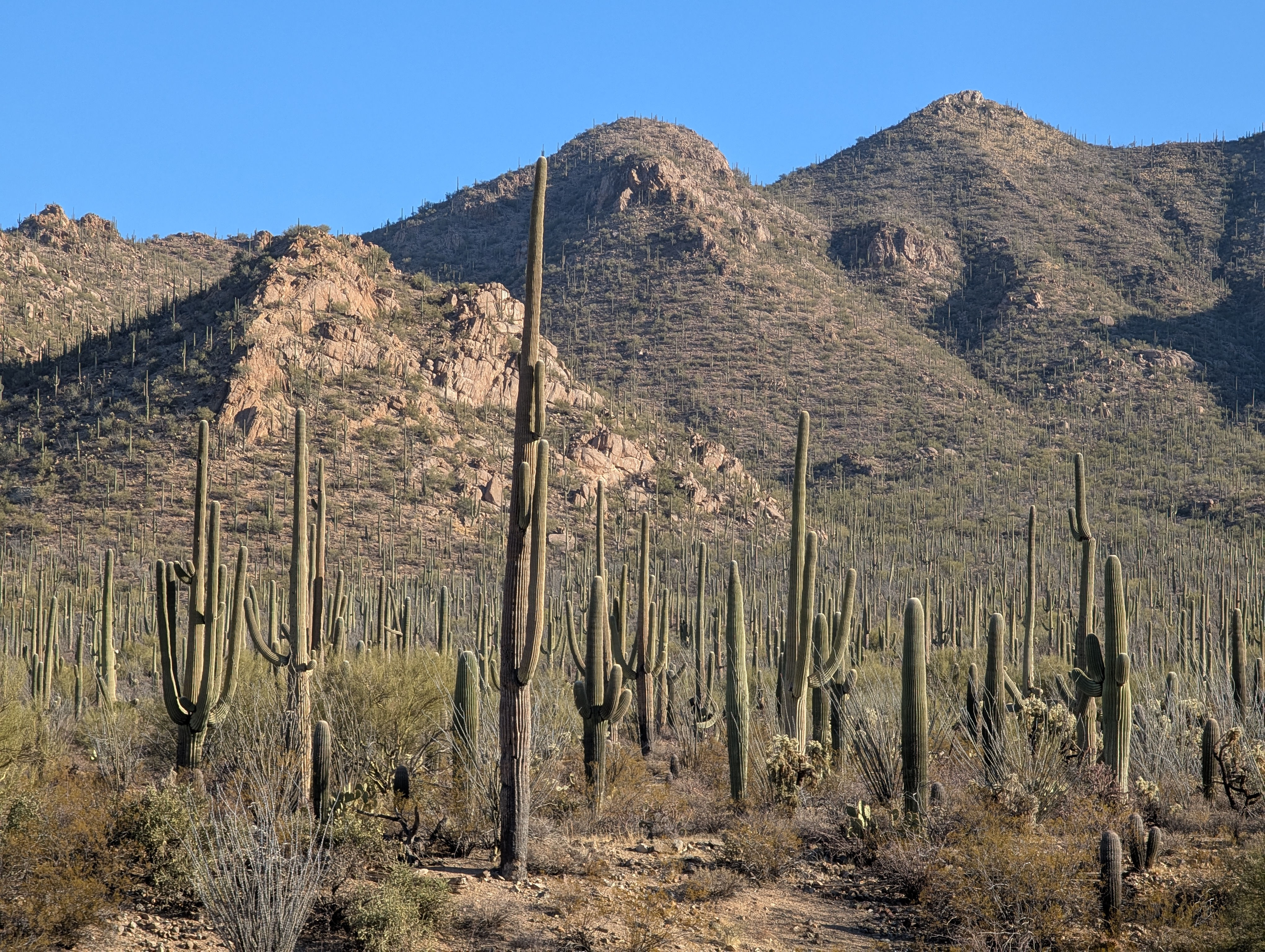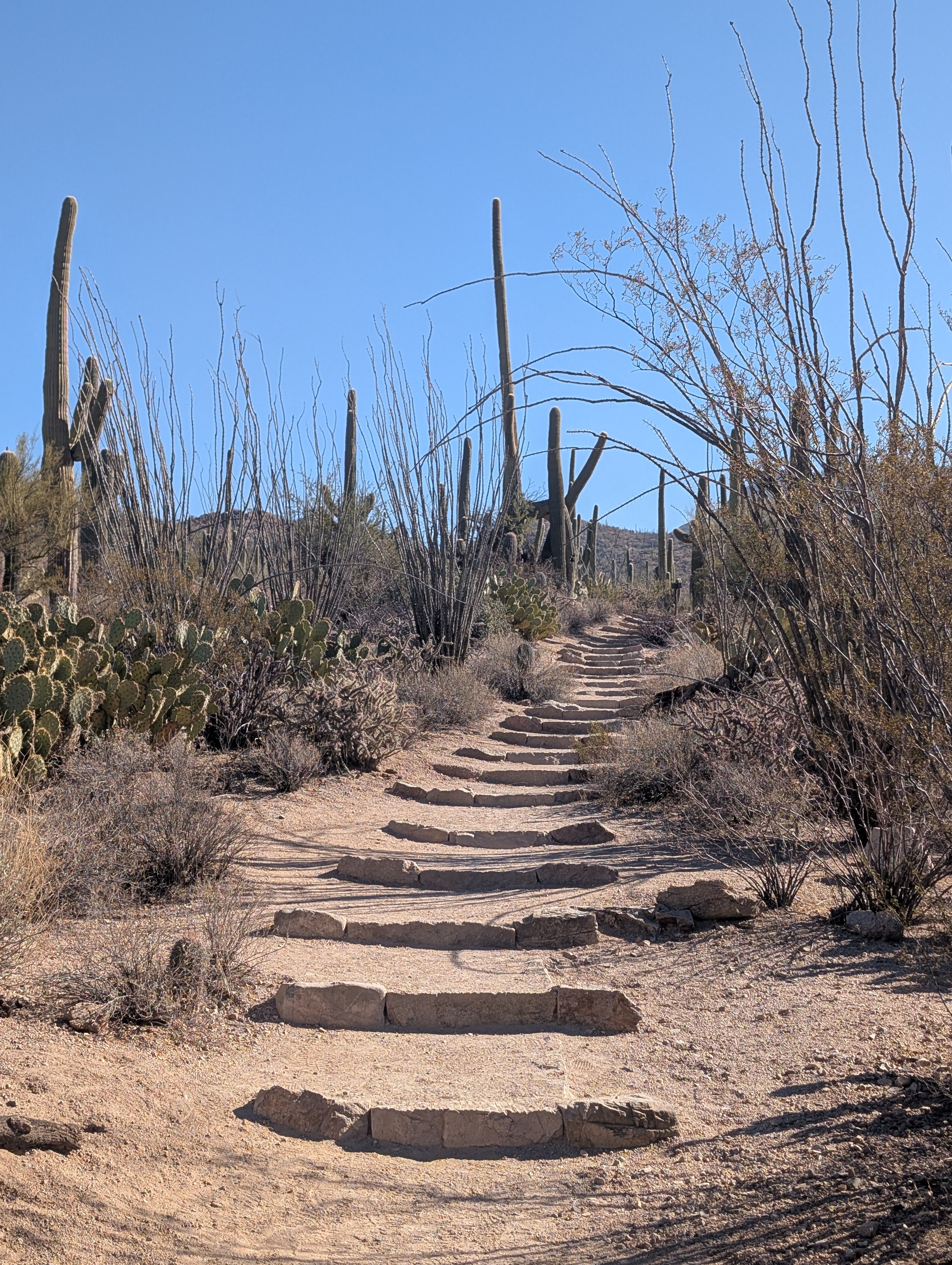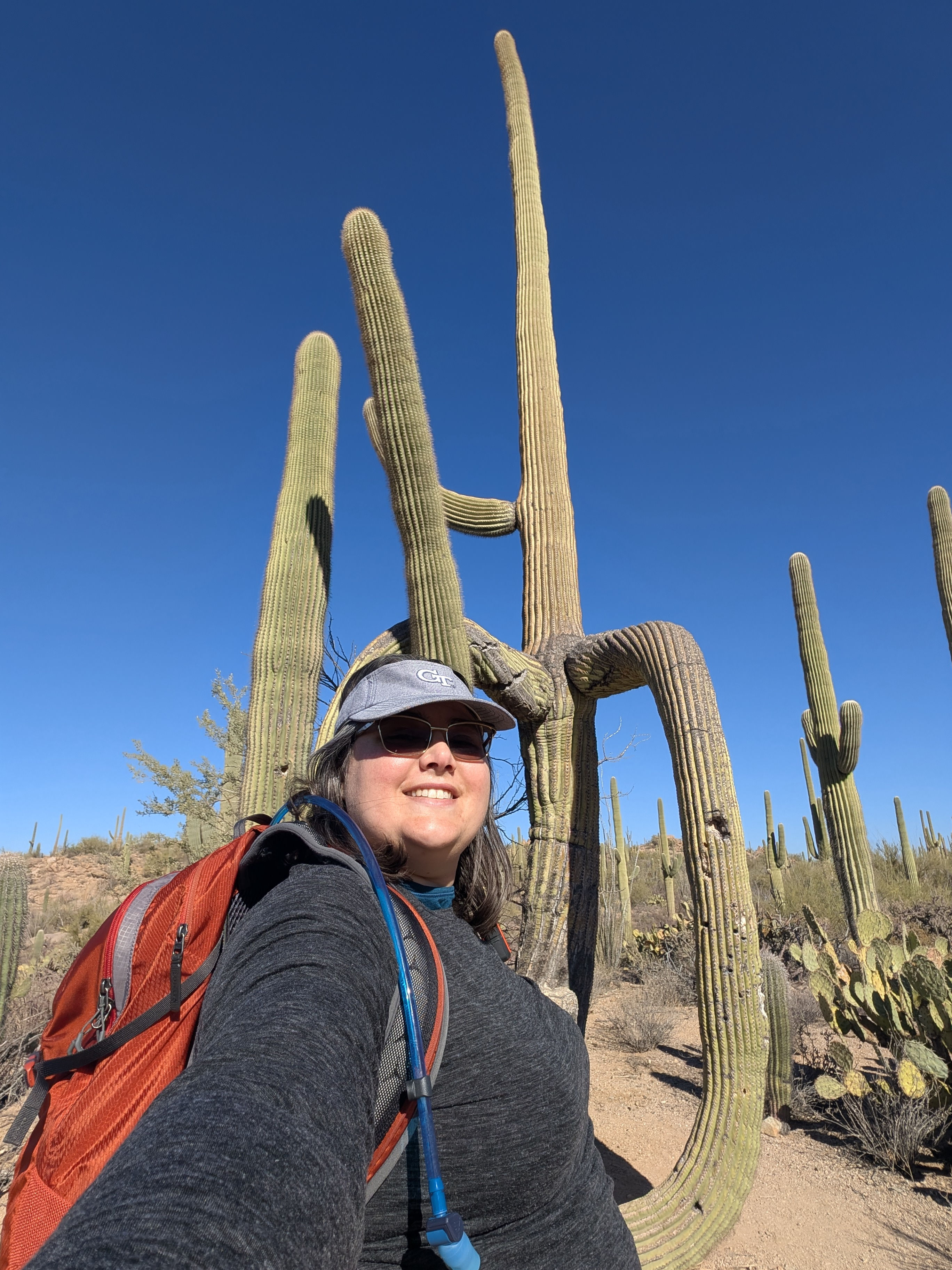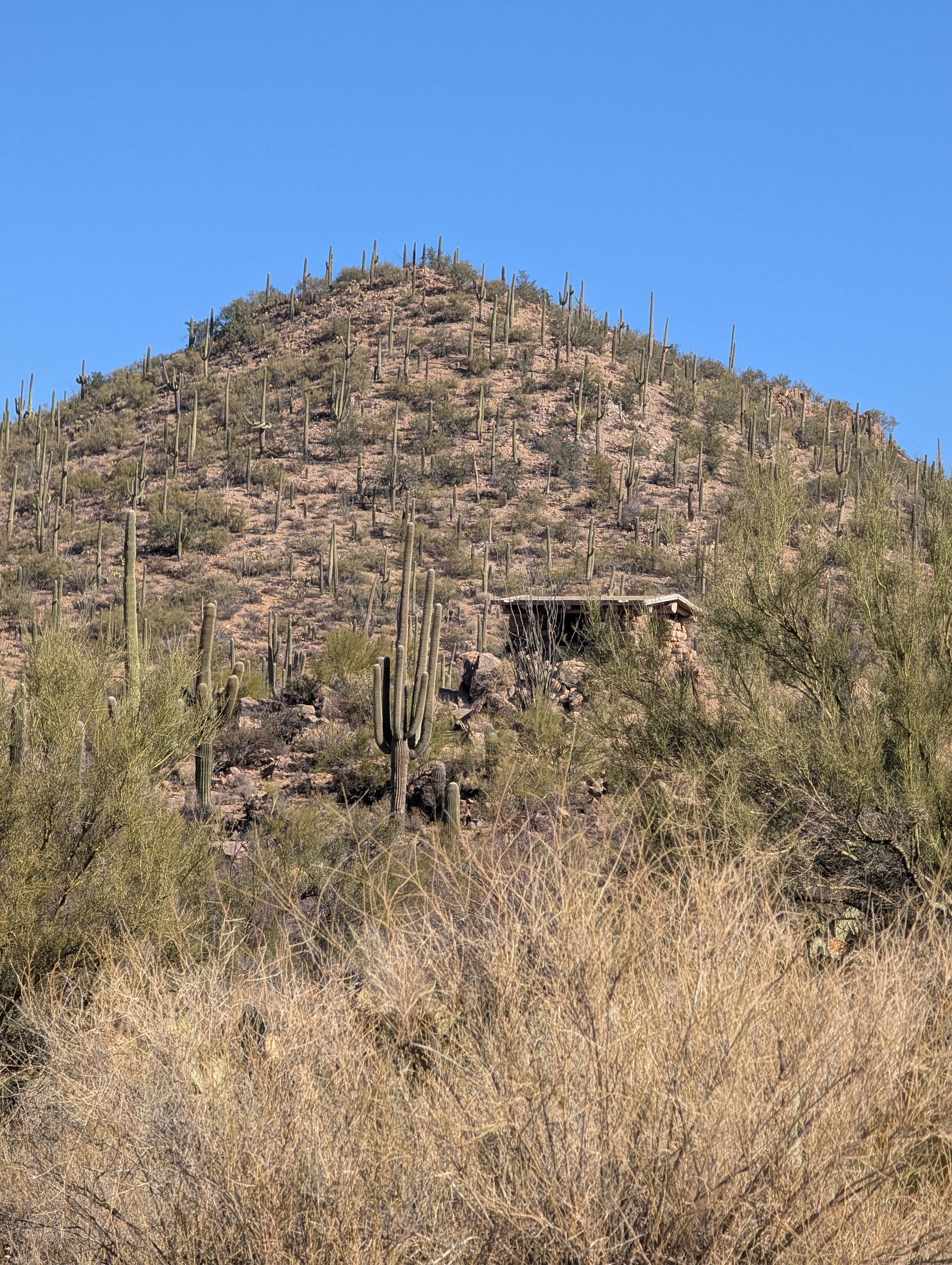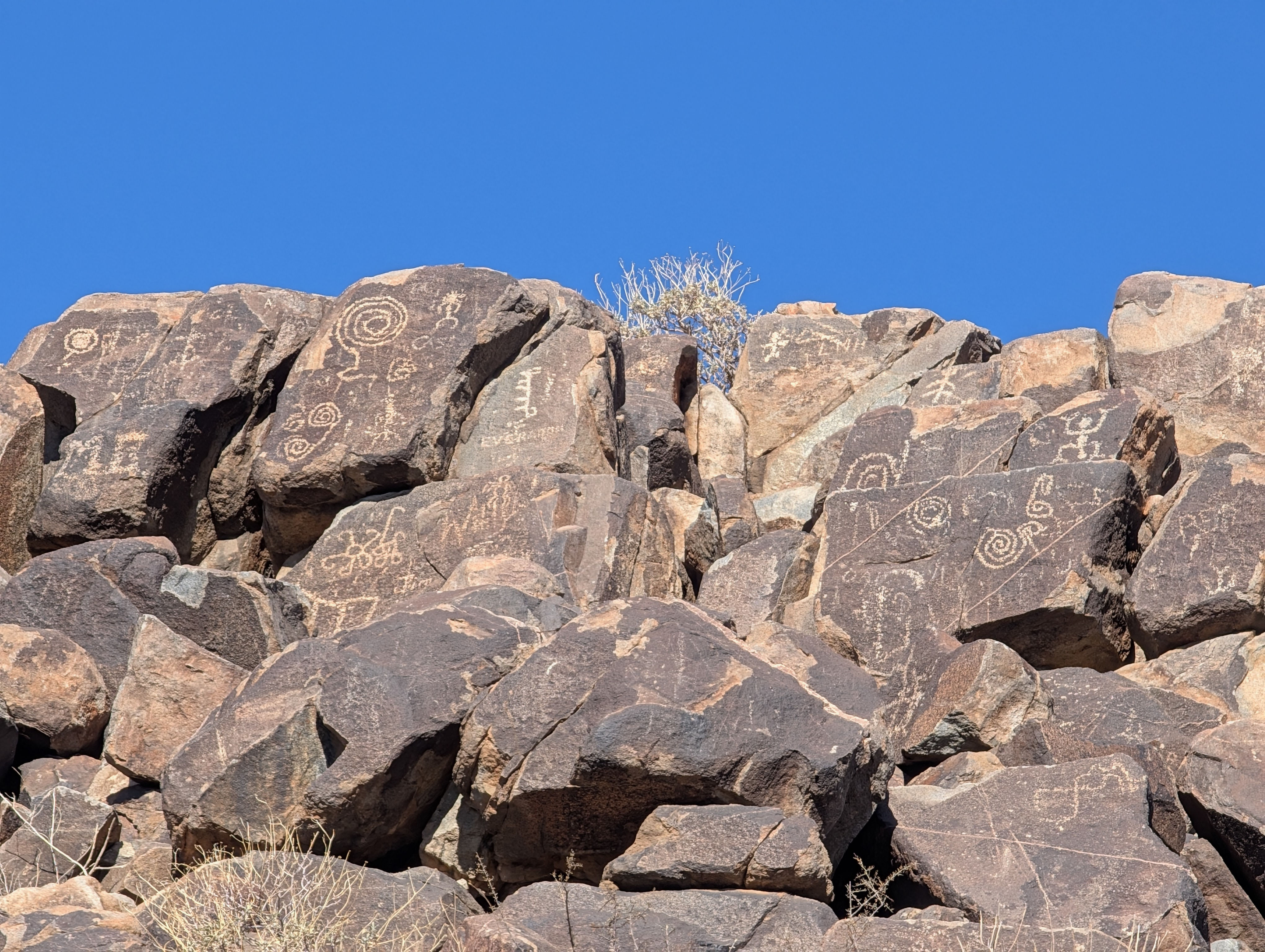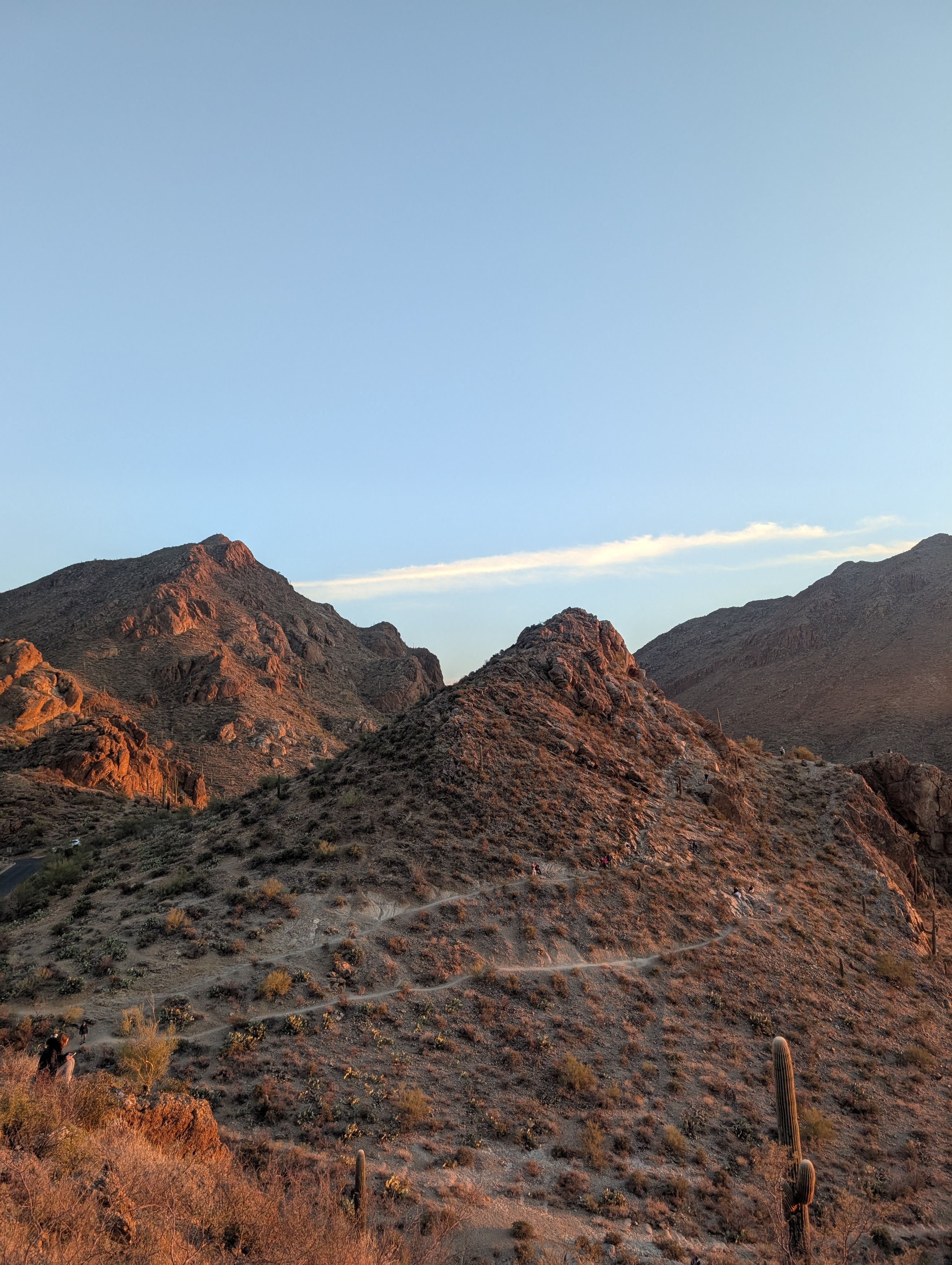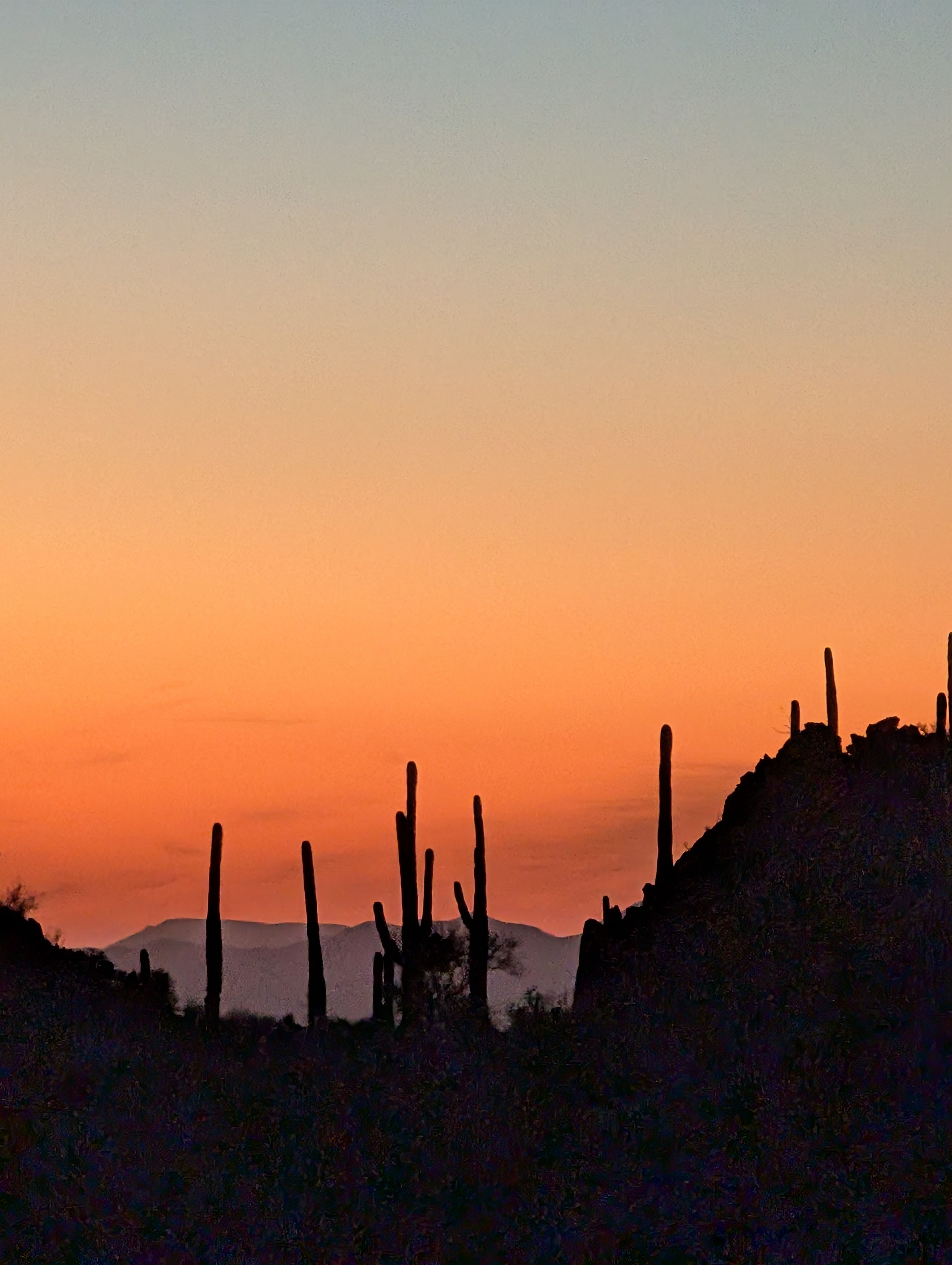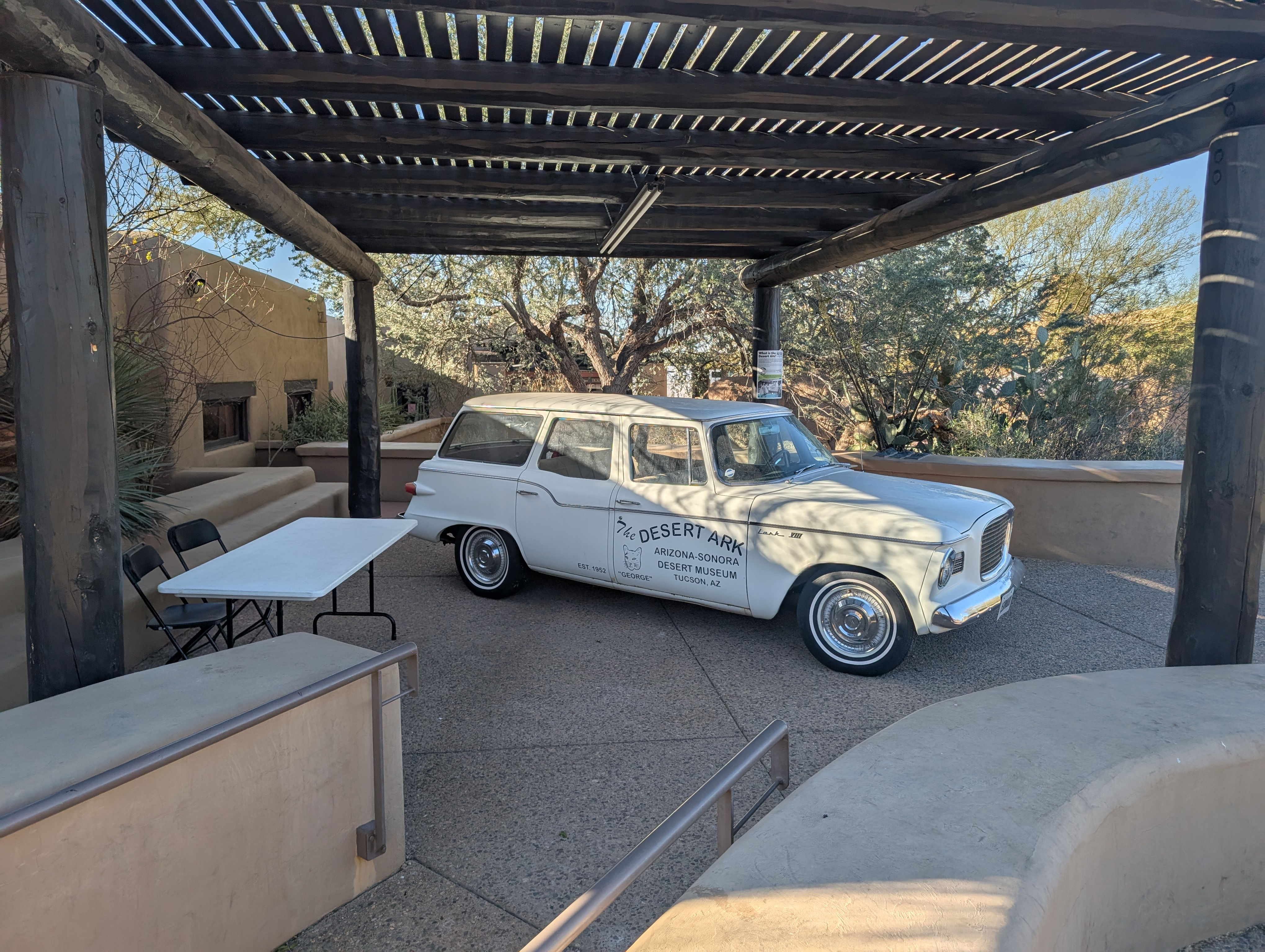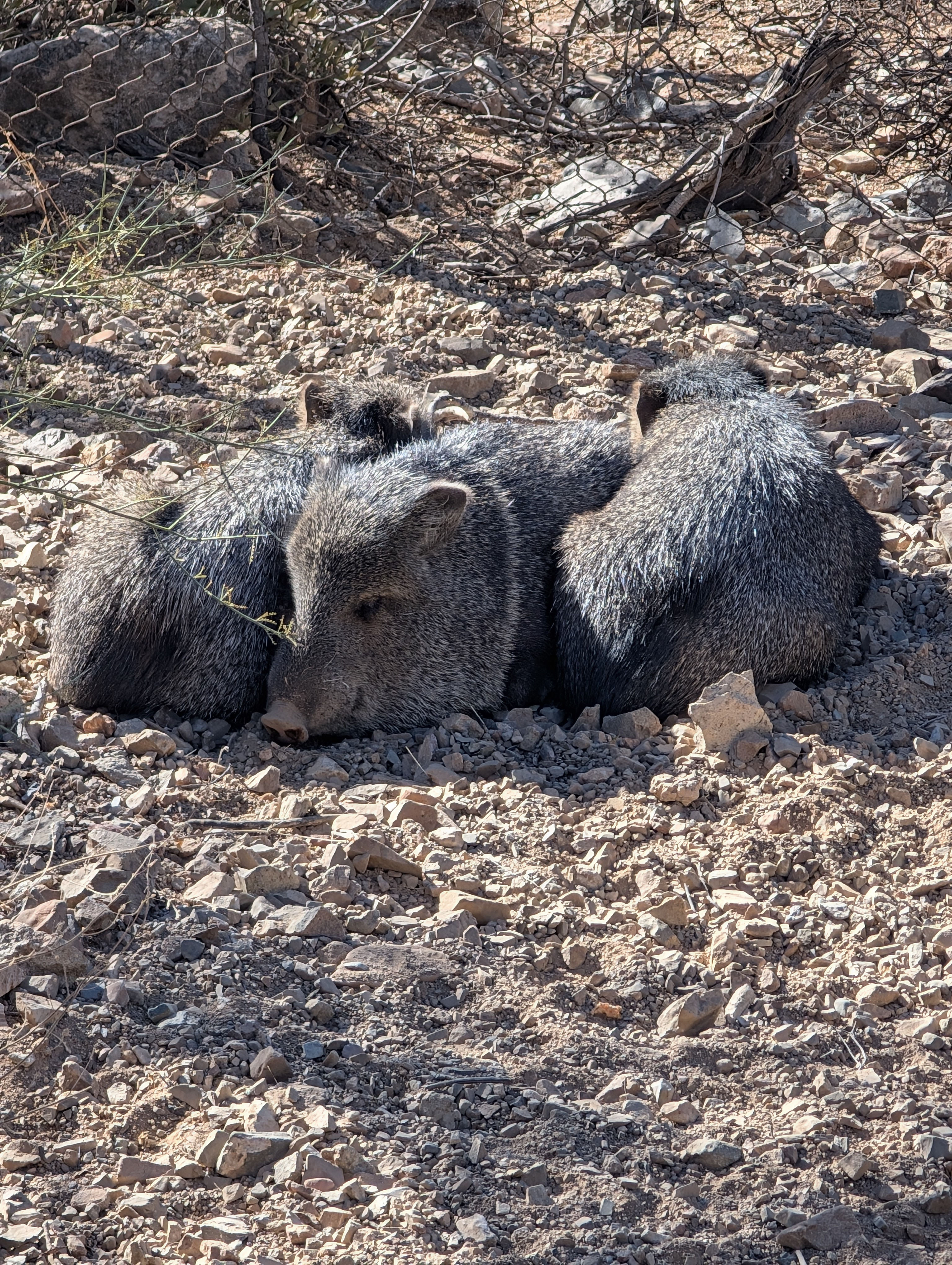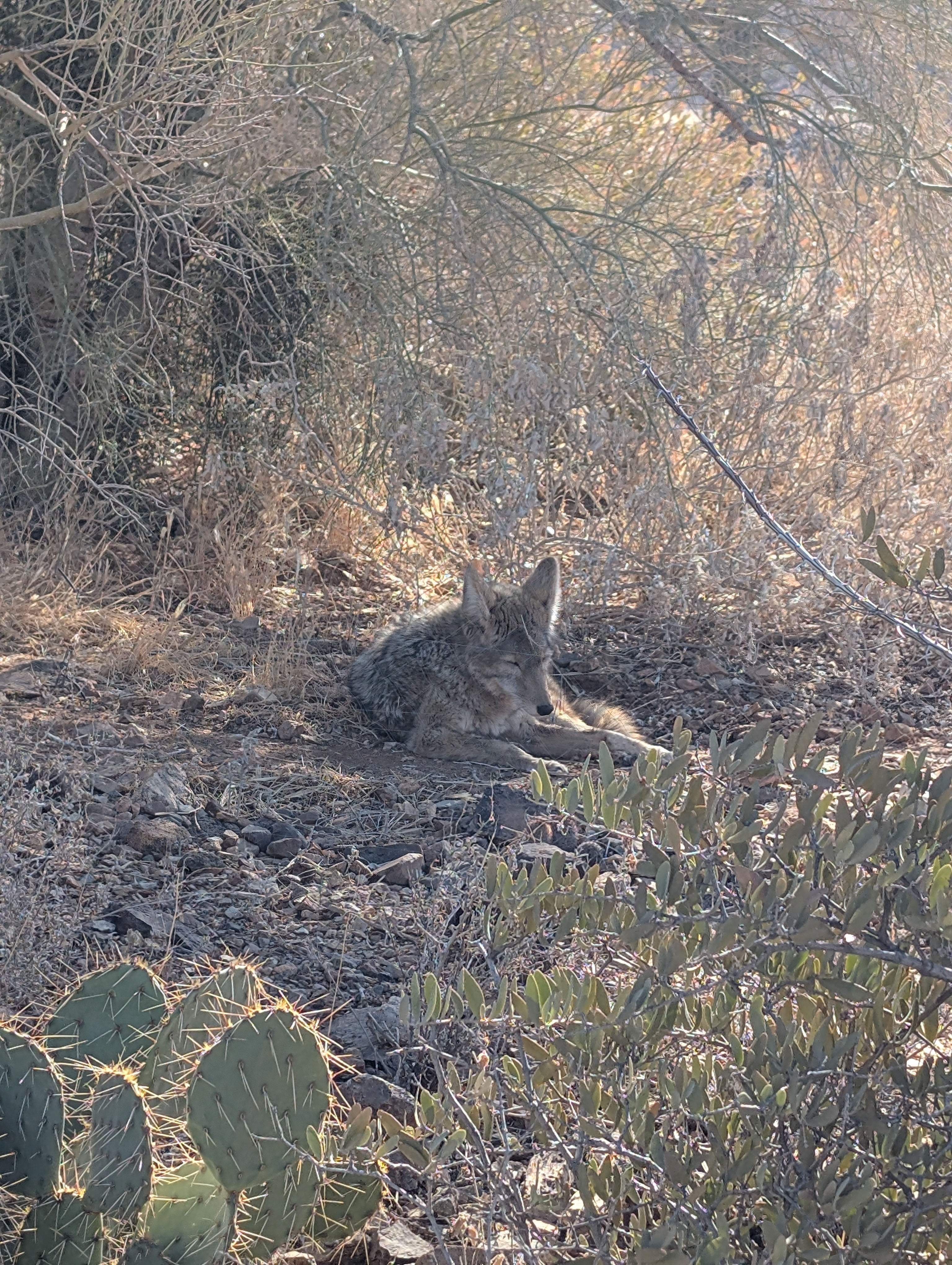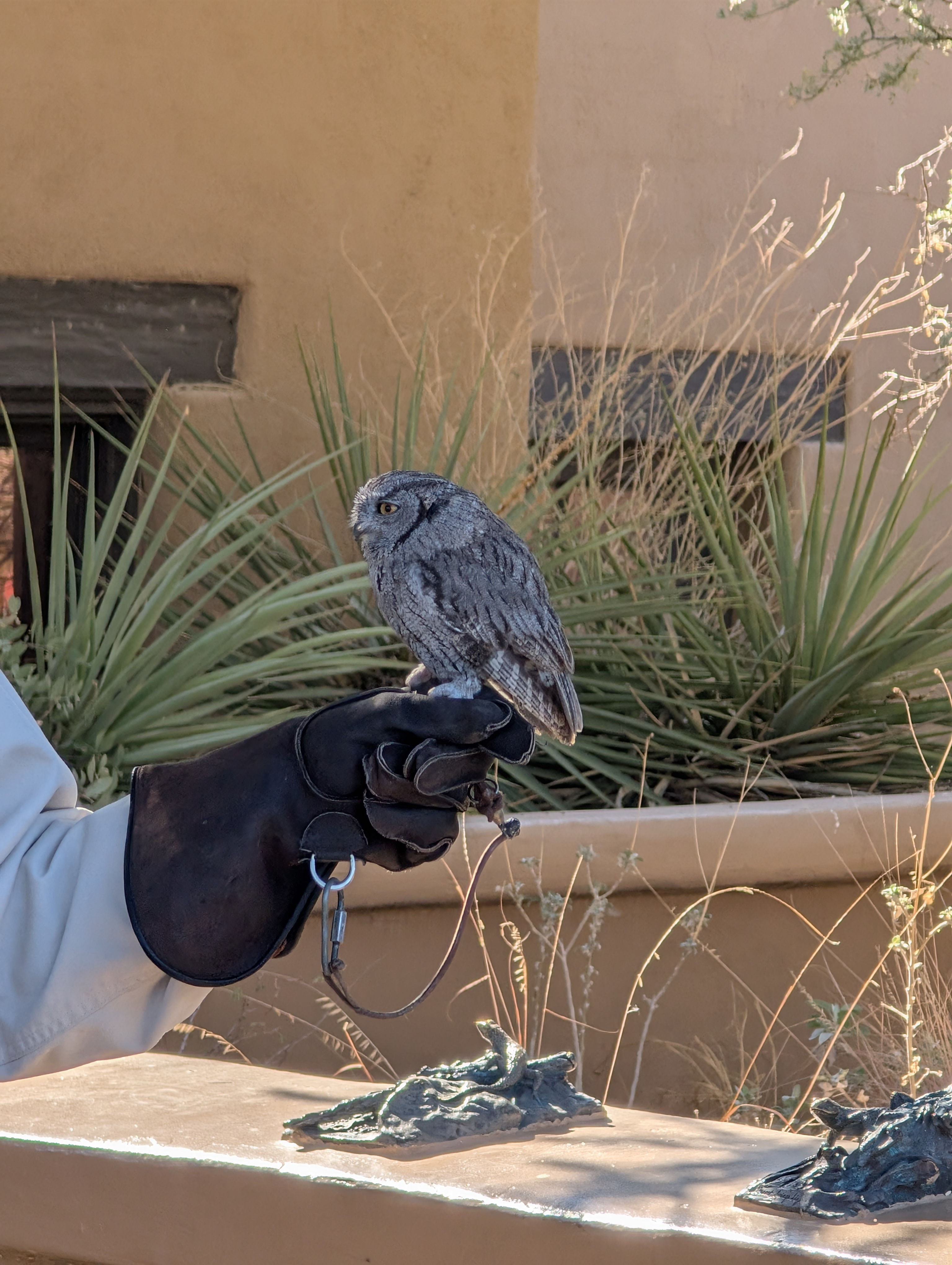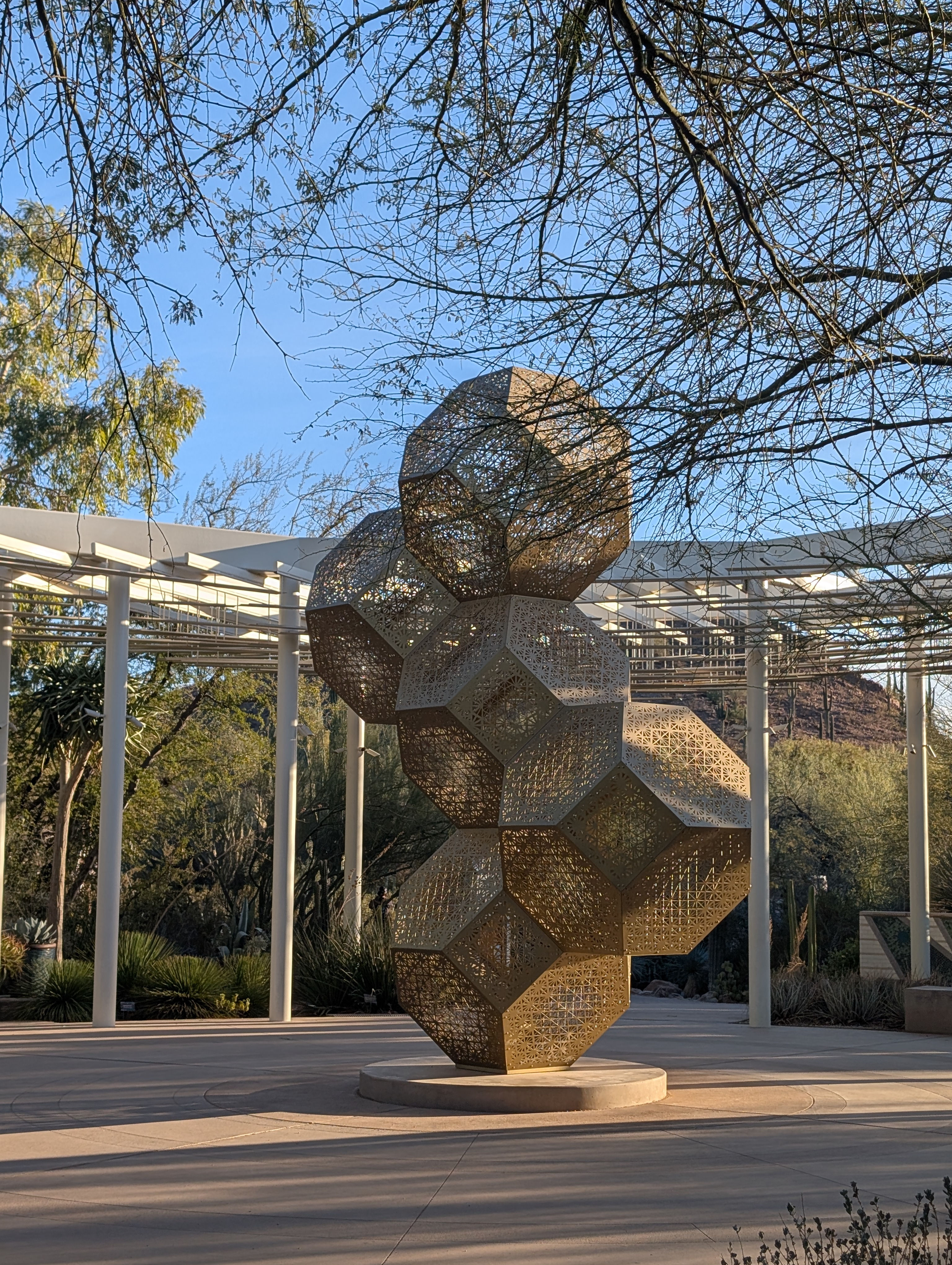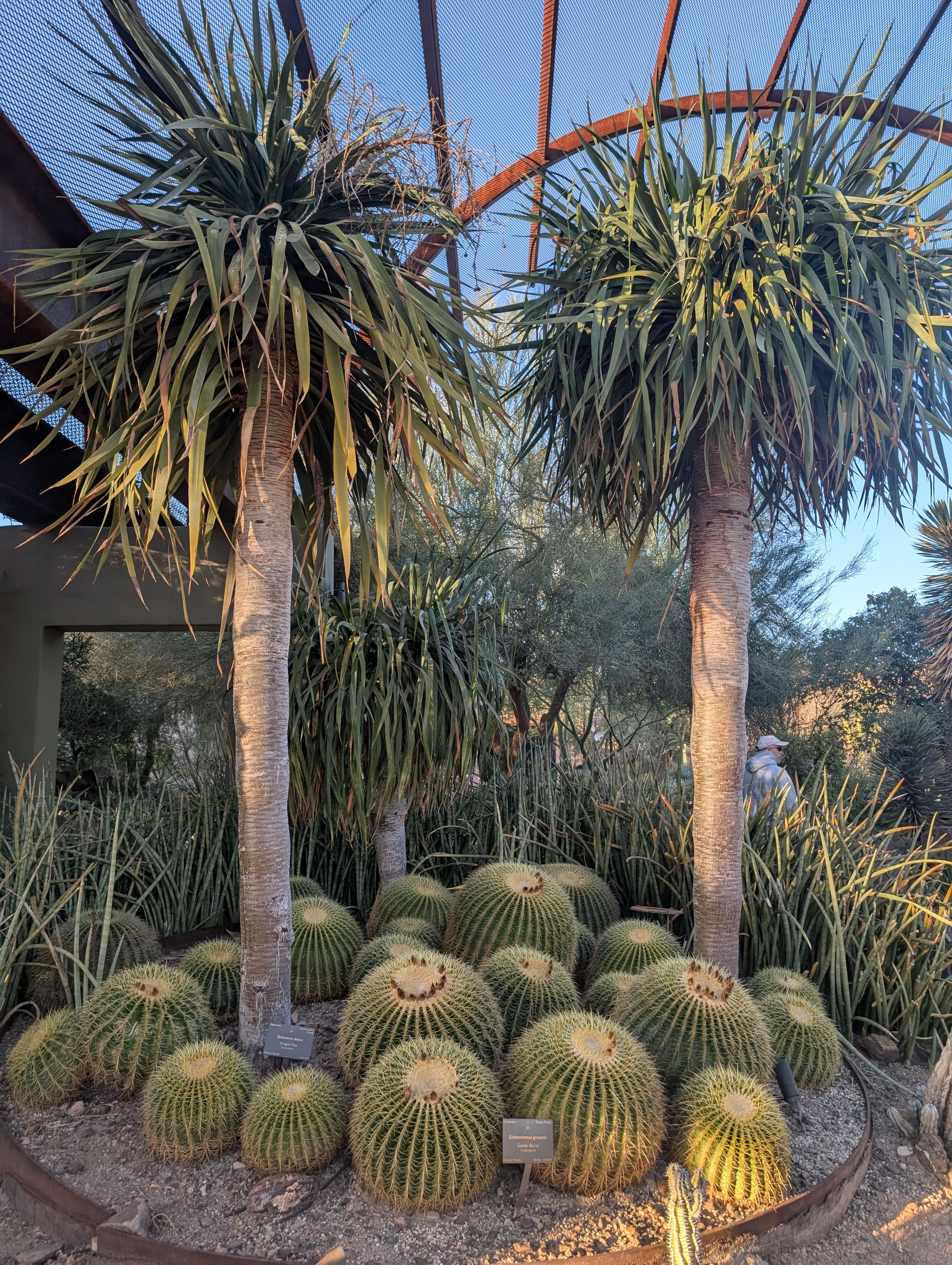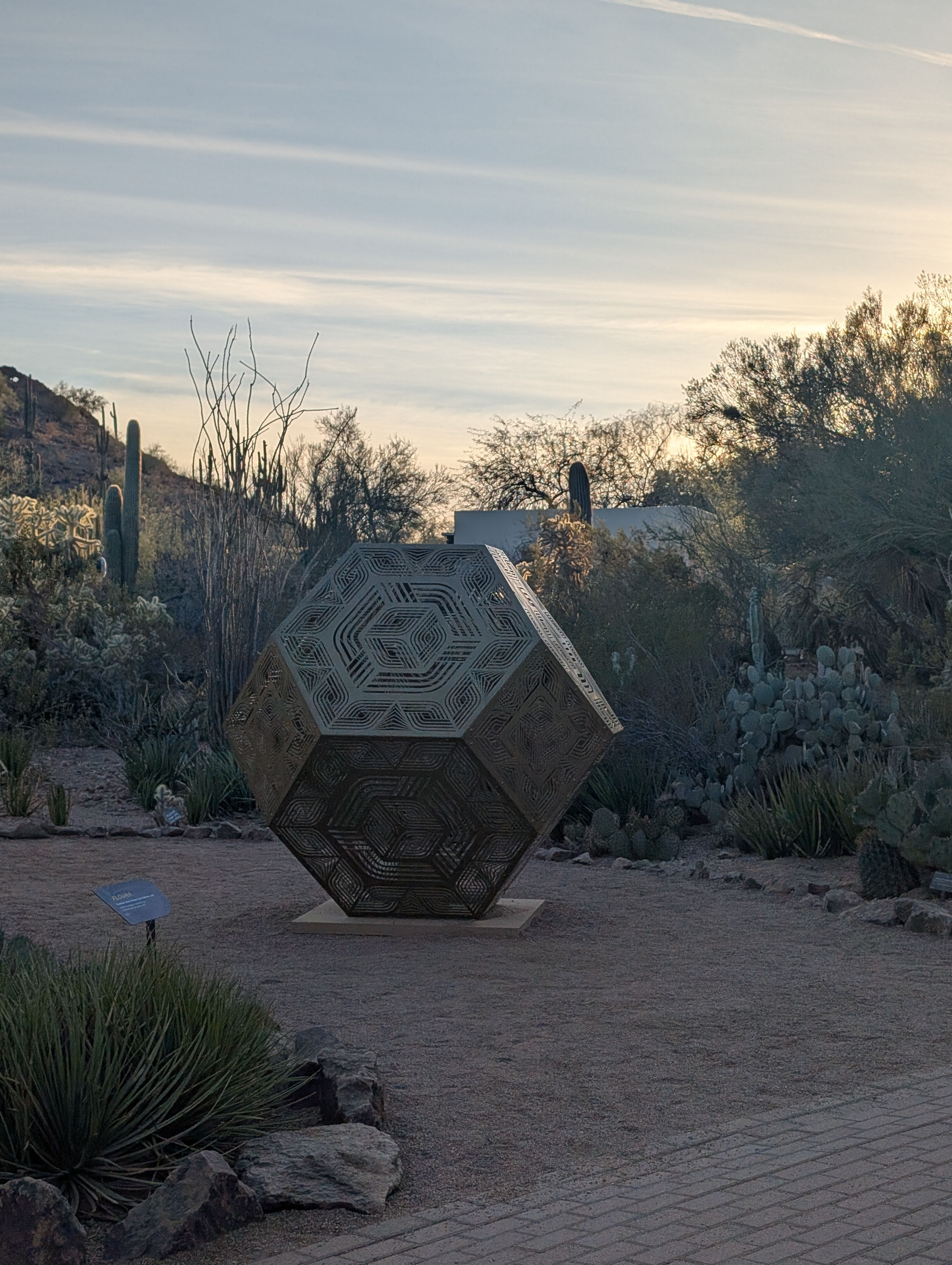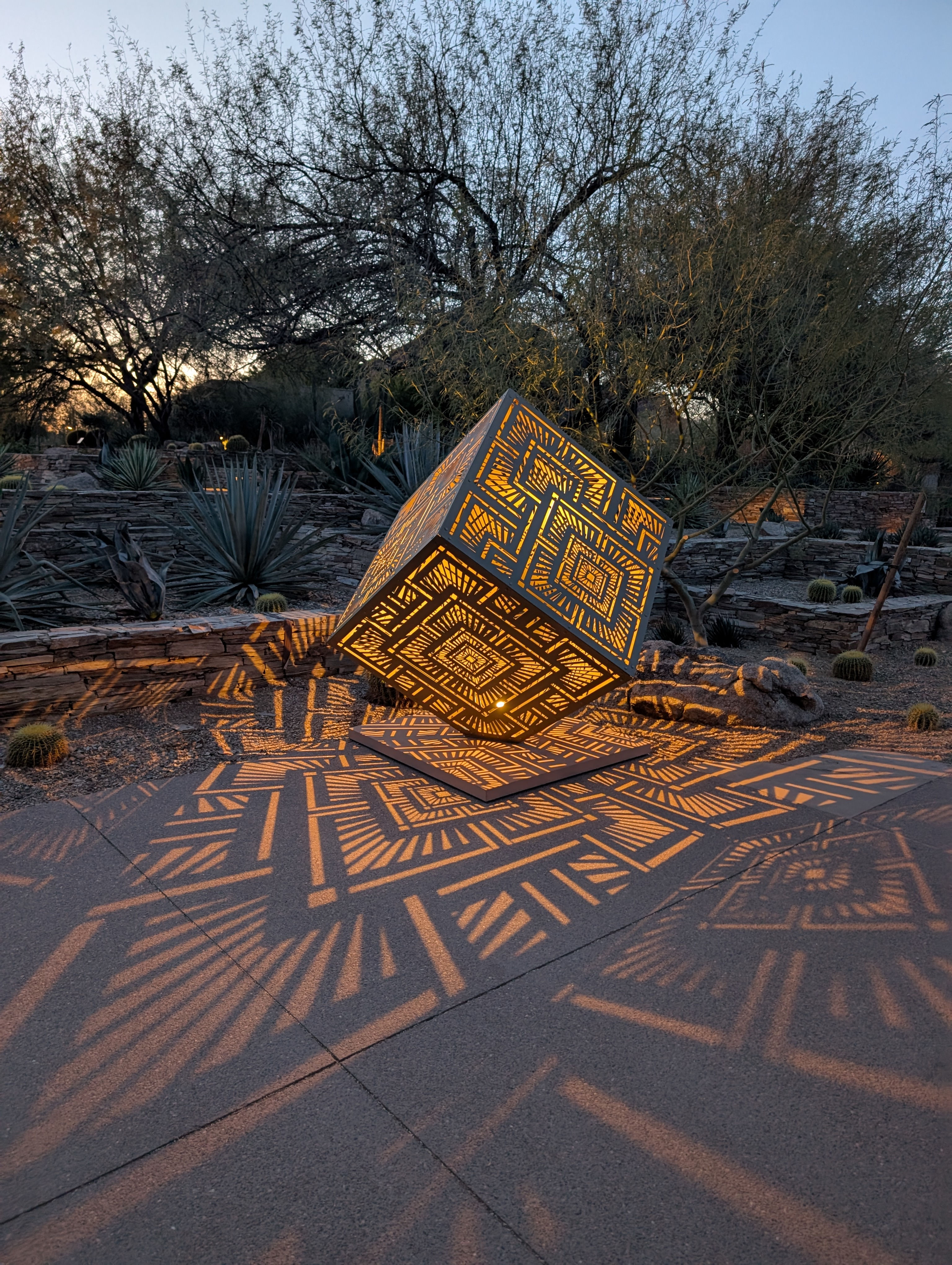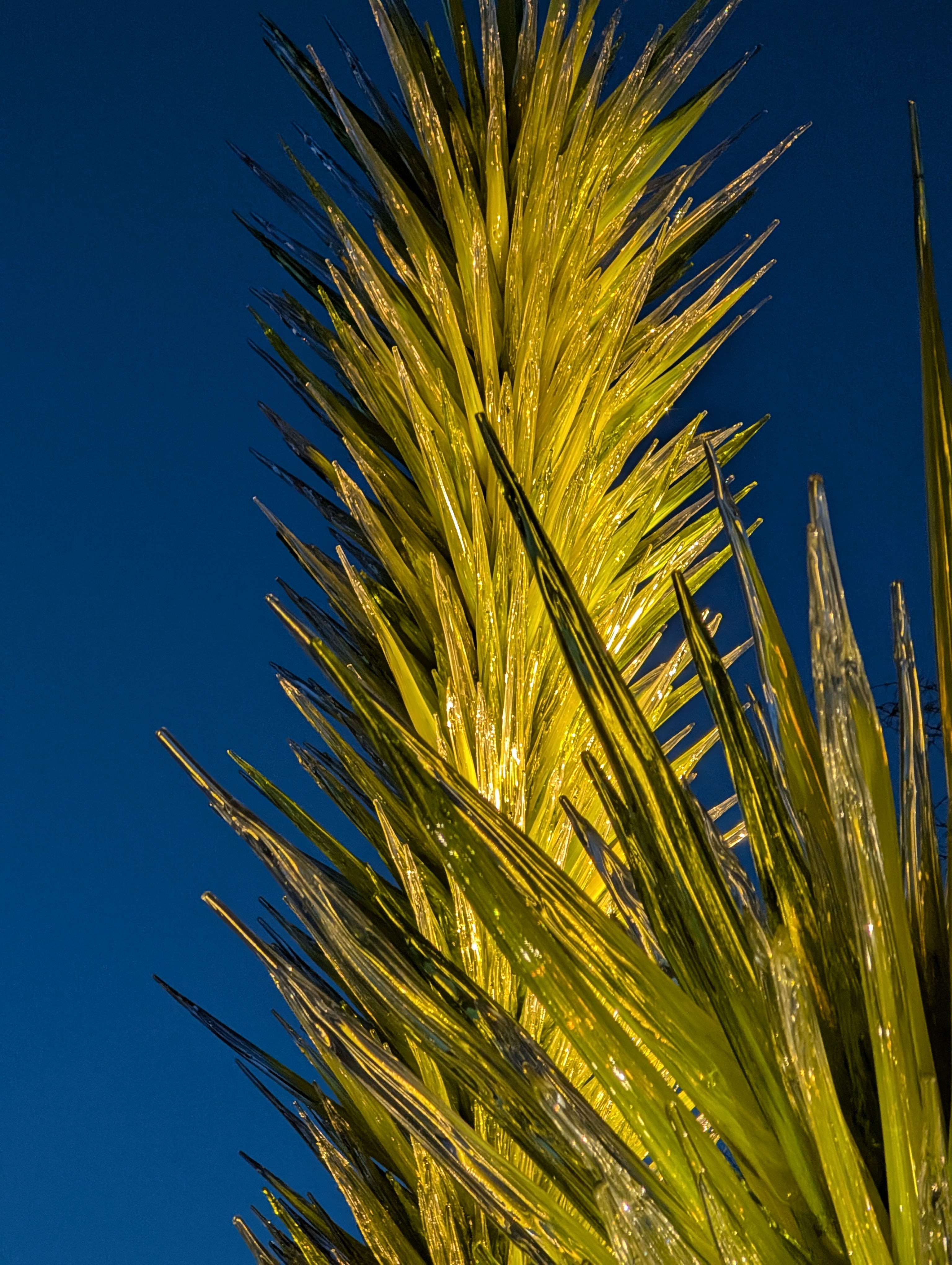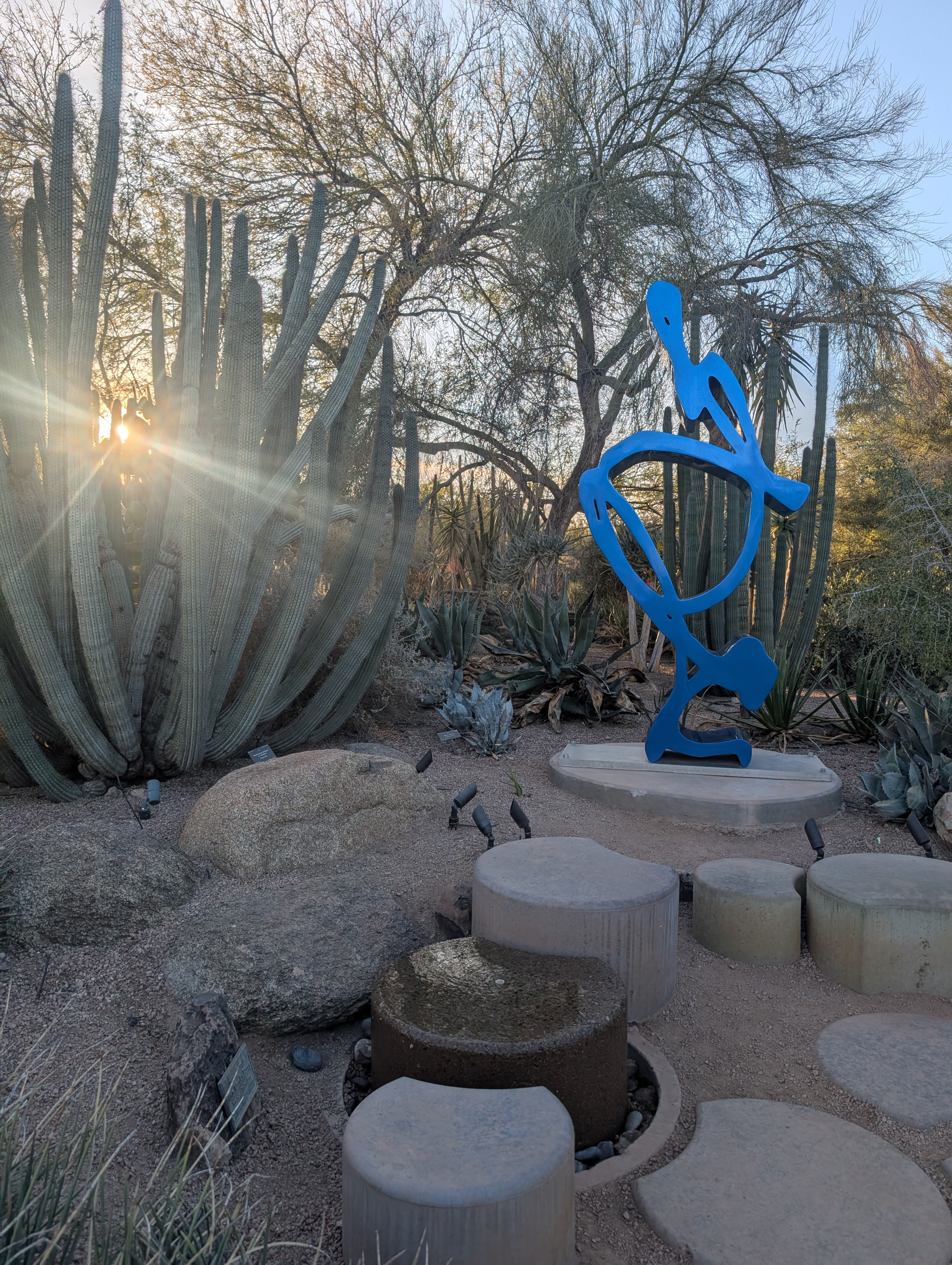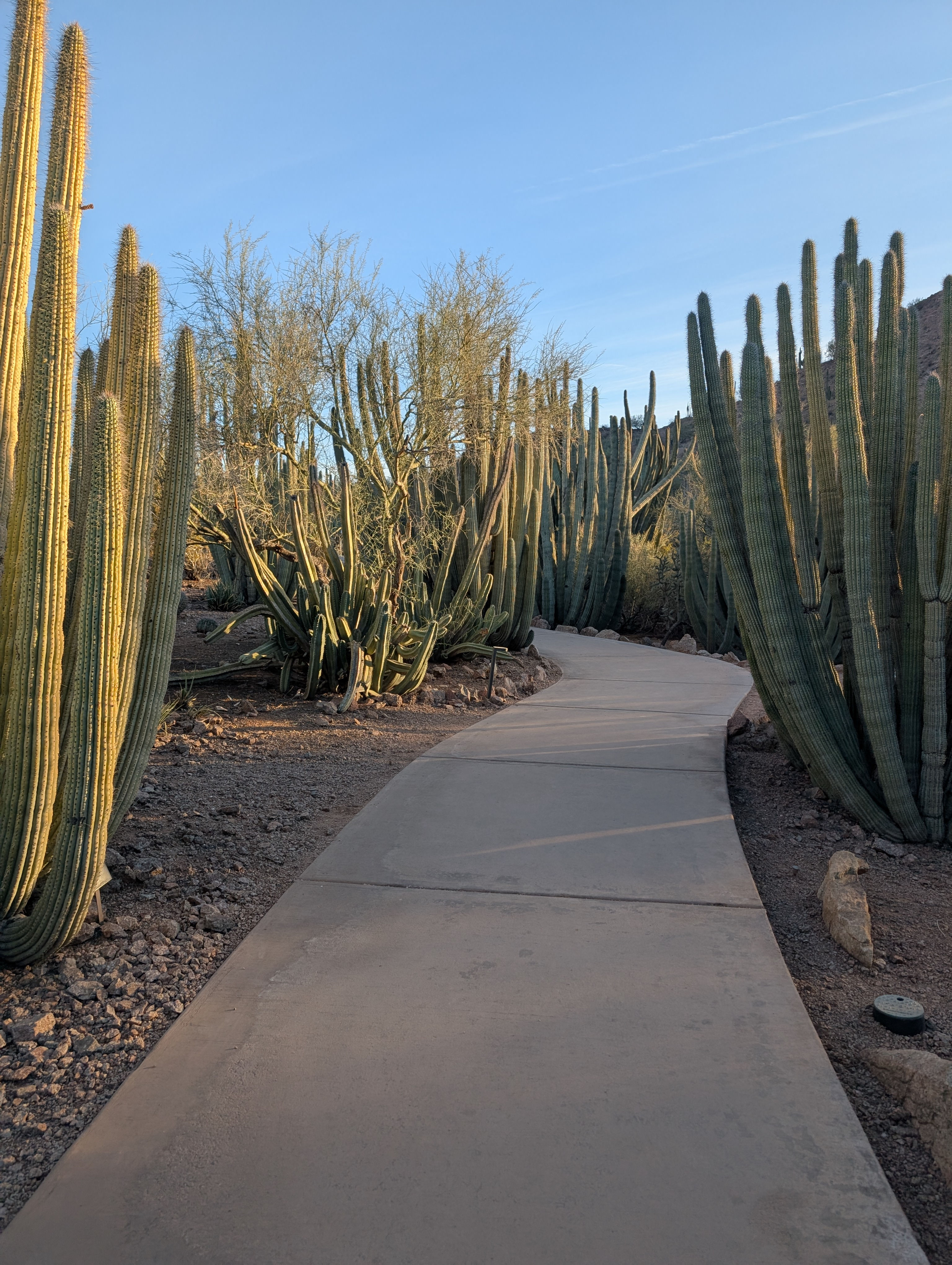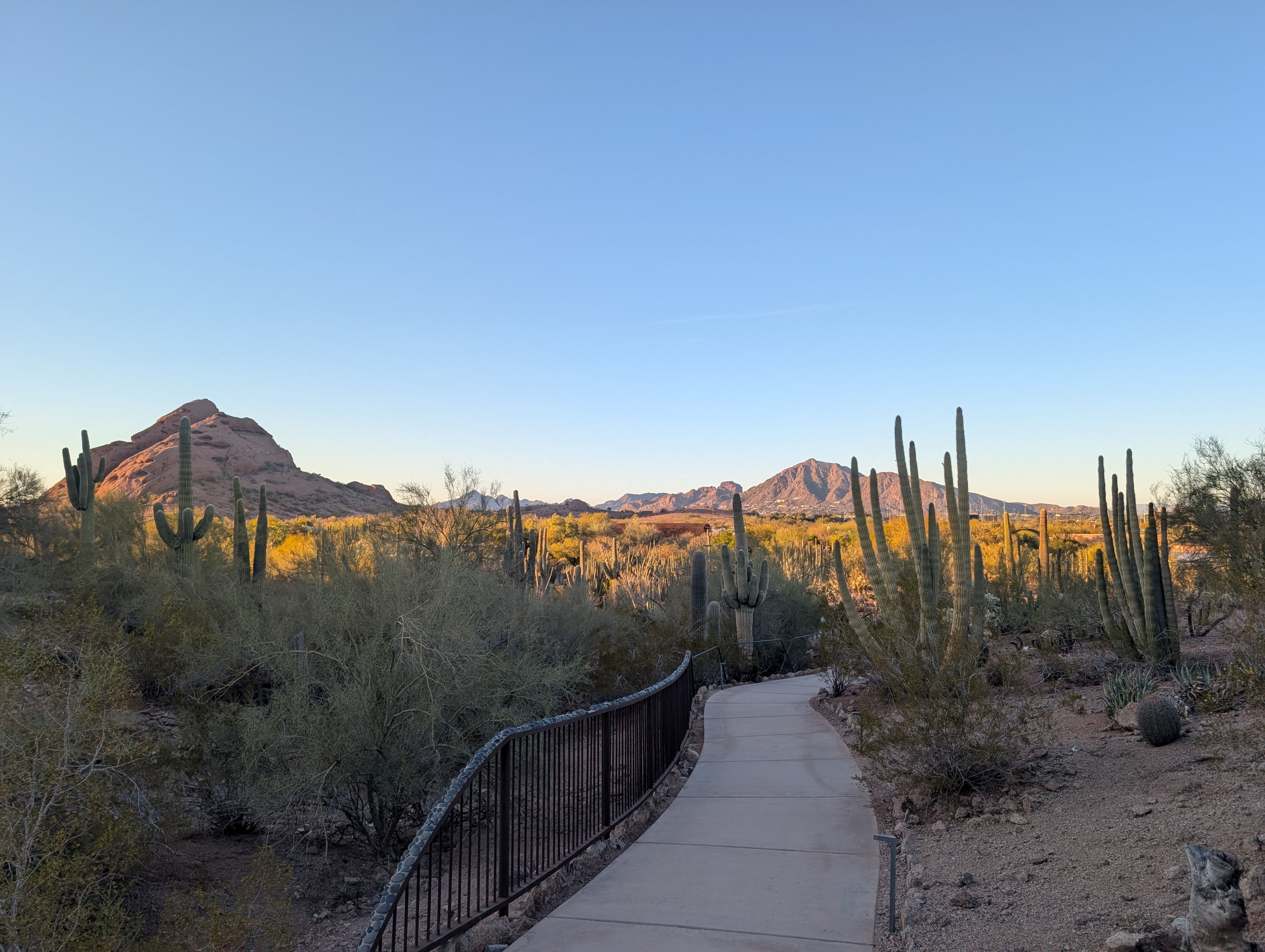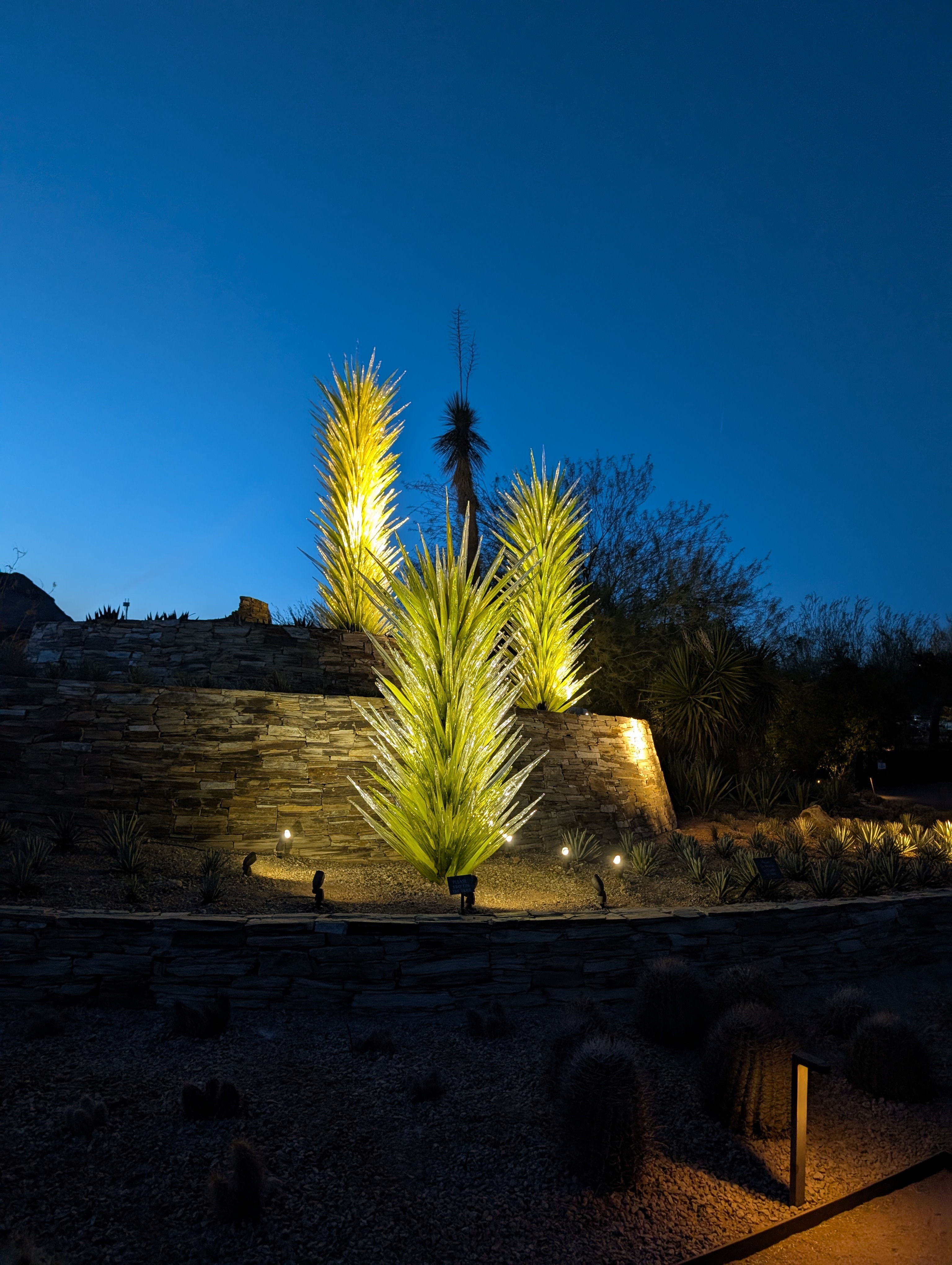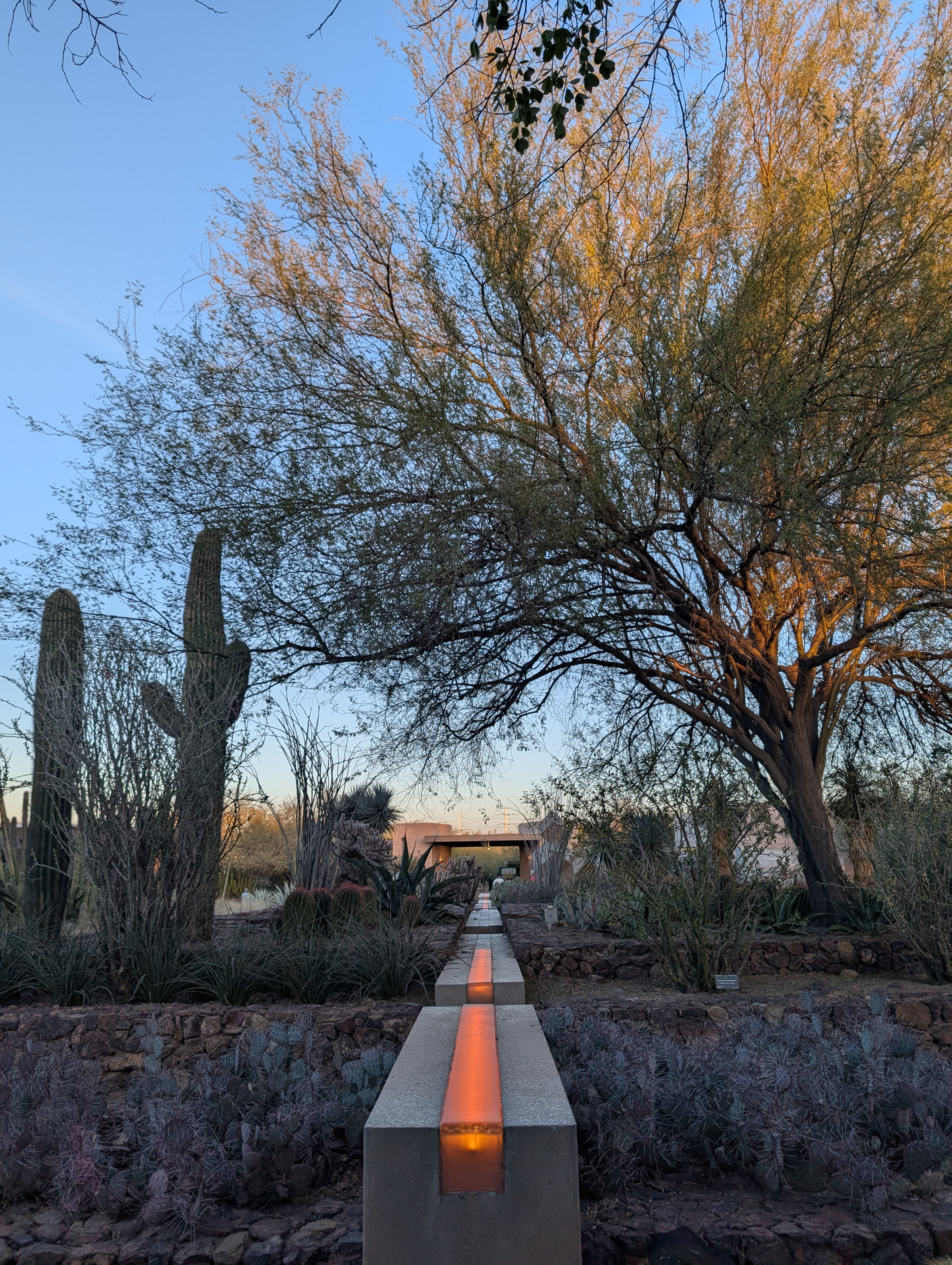Weekend adventure in Saguaro National Park
Let's take a weekend trip to Saguaro ( suh-waa-row ) National Park! This is my first solo trip of 2025 and it was a good weekend to be in nature cause well with the whole "drill baby drill" motto who knows how long we will have these places to explore. So I used this time to bolster myself for the times to come and make sure I could show up and support my family in the future.
Day 0:
So Saturday morning I took a 0715 flight out of our home base Atlanta GA and flew into Phoenix. It was a last minute 80 dollar direct flight with Delta; yes these flights exist and yes they are rare so I know how lucky I was and no you don't wanna know how many google flight searches I currently have turned on. After landing and collecting my bags I headed to the airport! The last time I was in Phoenix they did not have the train from the airport to the rental car station so this made the trip way easier! Next, I loaded up the car and stopped at In-and-out like all good Phoenix based trips start! A lotta traffic and Four hours later I made it to the Gilbert Ray Campground in Tucson AZ. This campsite has running water and flush toilets that were very well kept up! The trail head next to the camp was called brown mountain trail head and it was delightful. I started hiking pre-sunset and scoped out a good place to watch the last rays go down.
Now let's talk about politics; cause all parks are political and have always been political. The trail head I walked was named after C.B. Brown. He was the catalyst for withdrawing the Tucson mountains from mining activity and establishing his park in the 1920's. The land was closed to the mining and homestead act preserving the park so that the present and future generations could enjoy it! Protecting our environment makes us good stewards. We are not rental tenants sent here to pillage and plunder the land for the sake of the monster of oil and capitalism. The politics of parks in America is long and covered with blemishes, horror's to the indigenous population, and goodness along the way that I don’t know enough about to be the expert on; but the thing I know is that these great spaces should be protected and preserved for all future generations.
Day 1:
I slept in a bit due to the Coyotes that were howling late into the morning near the campground. They were an absolute joy to listen to and I was grateful to get to experience their songs. I still managed to roll out of bed to make coffee and watch the sunrise from my campsite! Then I started the nearly hour drive to East Saguaro National Park. Saguaro National Park was established as a national monument on March 1, 1933, and became a national park on October 14, 1994.
So this national park is broken into two sections divided by the city of Tucson itself. The East side of the park has some of the tallest and oldest Saguaro cactus due to it being so close to the mountain range and how much water the saguaro's receive. But why are there so many fewer cactuses here? This land was transformed into farm grazing land disturbing the Saguaro's very fragile infant life and greatly reducing the population of saguaro's. Thanks to conservation efforts the area no longer has grazing and hopefully there will be a resurgence of the population on this side of the park in the next few hundred years! Saguaro grows only a few inches in the first ten years of there life so it will take a bit to restore the landscape!
First Stop of the Day is the National Park Sign and then a quick hop into the visitor center to see what the rangers recommend. The ranger pointed me to a hike that left out of Douglas Spring Trail head to go out and see one of the Crested (Cristate) Saguaro on the Garwood Trail. This Ranger led hike was absolutely amazing and was considered a moderate ranger led hike of about 3 miles but with very little elevation change.
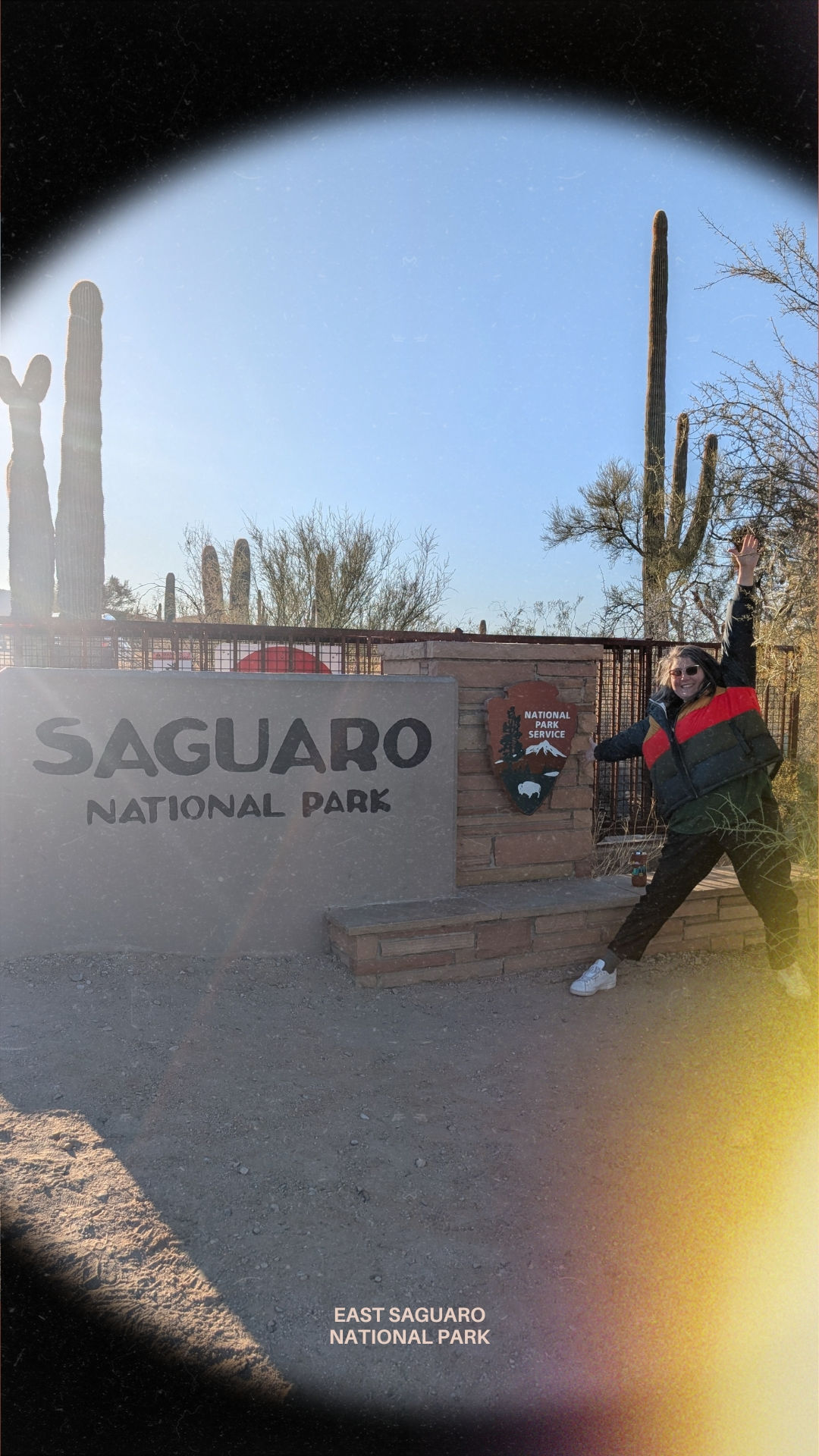
We got to see a Saguaro "cookie", "rib", and "boot". The "cookie" being a horizontal slice of a cactus. These are protected so don't go cutting them. The park rangers do get permission for educational purposes to cut these cookies from cactus that fall over on top of established trails after frost or wind events. The ribs are a wood material with one rib for every "pleat" of the saguaro. These ribs hold in the massive amounts of weight from the water the cacti absorb. And the ranger was very clear this is not the kinda cactus you can tap and drink water from. Even if you successfully tapped it, the gel that came out would give you vomiting and diarrhea due to the acidic nature that would hurt the kidneys. Lastly we got to see a "boot" or what is left after a bird digs a hole in the cactus and the cactus creates a "scab" or "callus" type of material to protect the exposed water filled tissues. [1][2][3] Other things we saw on the trail
We then were rewarded with the sight of the crested saguaro we were looking for. This hike was phenomenal and I would highly recommend it to anyone!

After a short packed lunch break, I gotta drive The Cactus Forest Scenic Loop Drive. The loop is 8 miles one way and paved with plenty of trails and pullouts and over looks. I ended up at the Javelina (ha·vuh·lee·nuh) picnic area where I napped till a sunset hike up the first section of the Tanque Verde Ridge Trail. While on the trail we saw a guy who was paragliding and looked like he had accidentally come over the park! one place I would definitely not like to land is in a national park full of pointy things! This was a great trail and I loved getting to see the amazing Arizona sunset!
Day 2:
Camp sunrise was amazing again! And then off to visit West Saguaro National Park which was only about a 7 min drive from my campsite. The "parkitecture" here was amazing. For those who don't know "The birth of national parks in the late 19th century brought with it a unique and new style known as National Park Service (NPS) Rustic or, as it's more affectionately known by NPS staff, 'parkitecture.'" The landscape and the visitor center blended beautifully together with tons of educational activities in the visitors center. This side of the park definitely had more saguaro's than the east side.
After the visitors center I went out to explore the Six miles of unpaved road that makes up the Scenic Bajada Loop Drive. The Valley view overlook trail was an amazing place to get out and hike.
Next I stopped at signal hill petroglyph's to learn about the peoples who have long lived on the land. The indigenous peoples of Saguaro National Park include the Akimel O'odham, Apache, Hopi, Maricopa, Yaqui, Tohono O'odham, Yavapai, and Zuni. The Tohono O’odham continue to gather saguaro fruit still to this day.
After lunch and a long nap I hiked up Gates Pass to watch the sun set and it was truly a great sunset to chase! Followed by more amazing tacos and a senora dog to celebrate the area!

Day 3:
So today I woke up and packed up my campsite at Gilbert ray and headed over to the Arizona-Sonora Desert Museum to learn more about the area! And here I got to see some Javelina in person! The museum is very large and I definitely did not have enough time to dedicate to it. I particularly liked getting to go in the humming bird area!
Before too long it was time to Drive back to Phoenix . Now on this trip I made a mistake. The showers I had expected to use were closed for the winter season so thankfully some kind friends let me clean up at their place in Phoenix. The next time I am out I will do more research! Then I got to go see the Phoenix Botanical Gardens! It was very well laid out and a perfect way to spend my last few hours in tranquility before my flight!
Red eye flight home! I got to the airport at 1900 (7pm), breezed through security and waited for my red eye. The redeye overlords were kind to me and I was able to have the whole row to myself and get a full 4 hours of sleep! Let's say yes to more wild adventures! If it fits in the budget imma try and chase the sunset this year.

[1] "Sonoran Desert Field Guide". Sonoran Desert Naturalist. Archived from the original on March 24, 2023. Retrieved 10 March 2011. [2] Don, Glass. "A Moment of Science: Saguaro Boot". Indiana Public Media. Archived from the original on Oct 2, 2022. Retrieved 11 March 2011. [3] Flora of North America: North of Mexico. Magnoliophyta : Caryophyllidae. Caryophyllales. (Pink order), Volume 4, Part 1. Oxford University Press. 2004. p. 185. ISBN 0-19-517389-9. Scar tissue that forms around nest cavities excavated in saguaro stems is later encountered among the remains of a dead saguaro as a hard, brown shell known as a "saguaro boot" because of its shape.
Thoughts? Reach out at: mythoughtsofindigo@gmail.com




